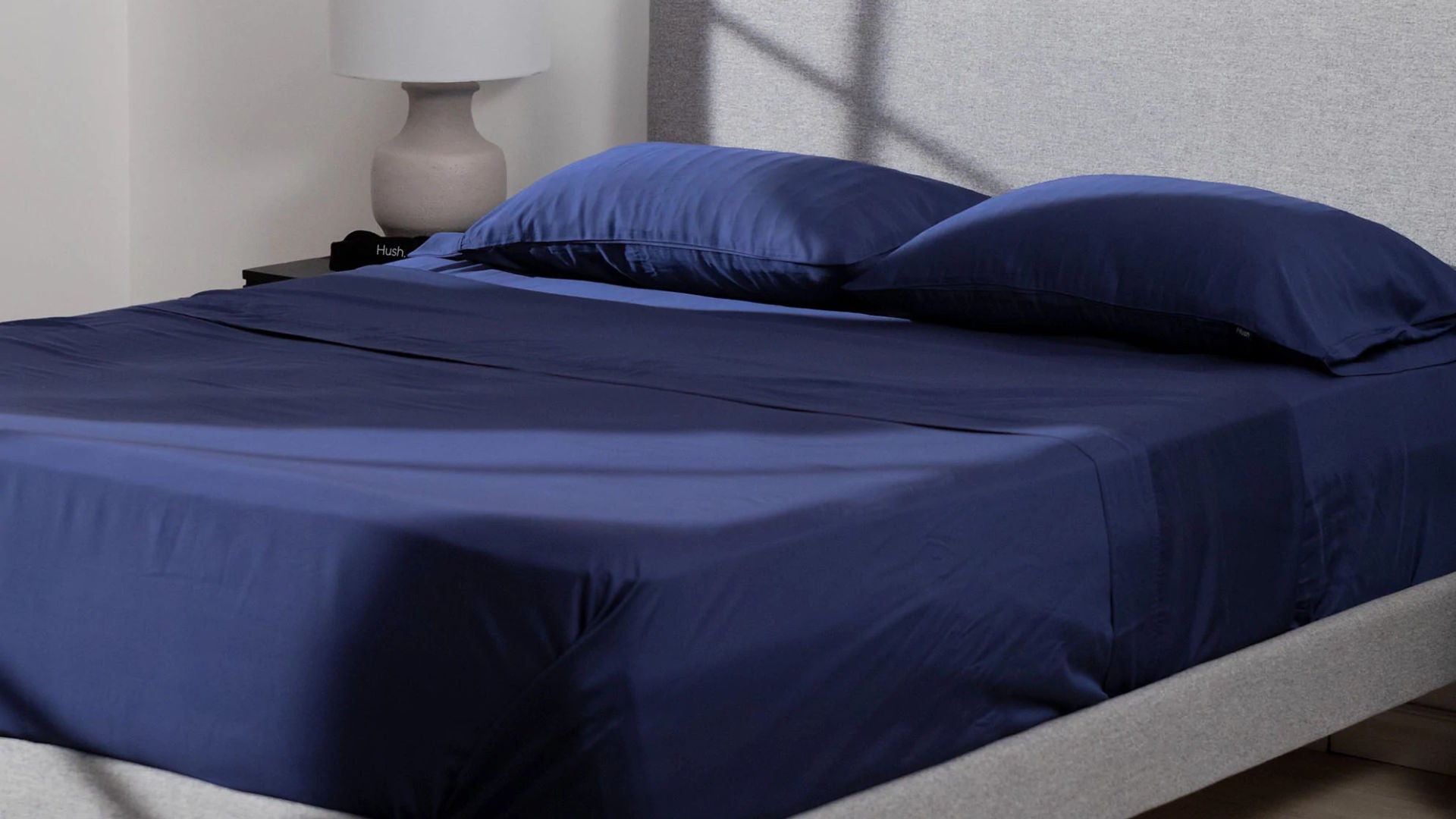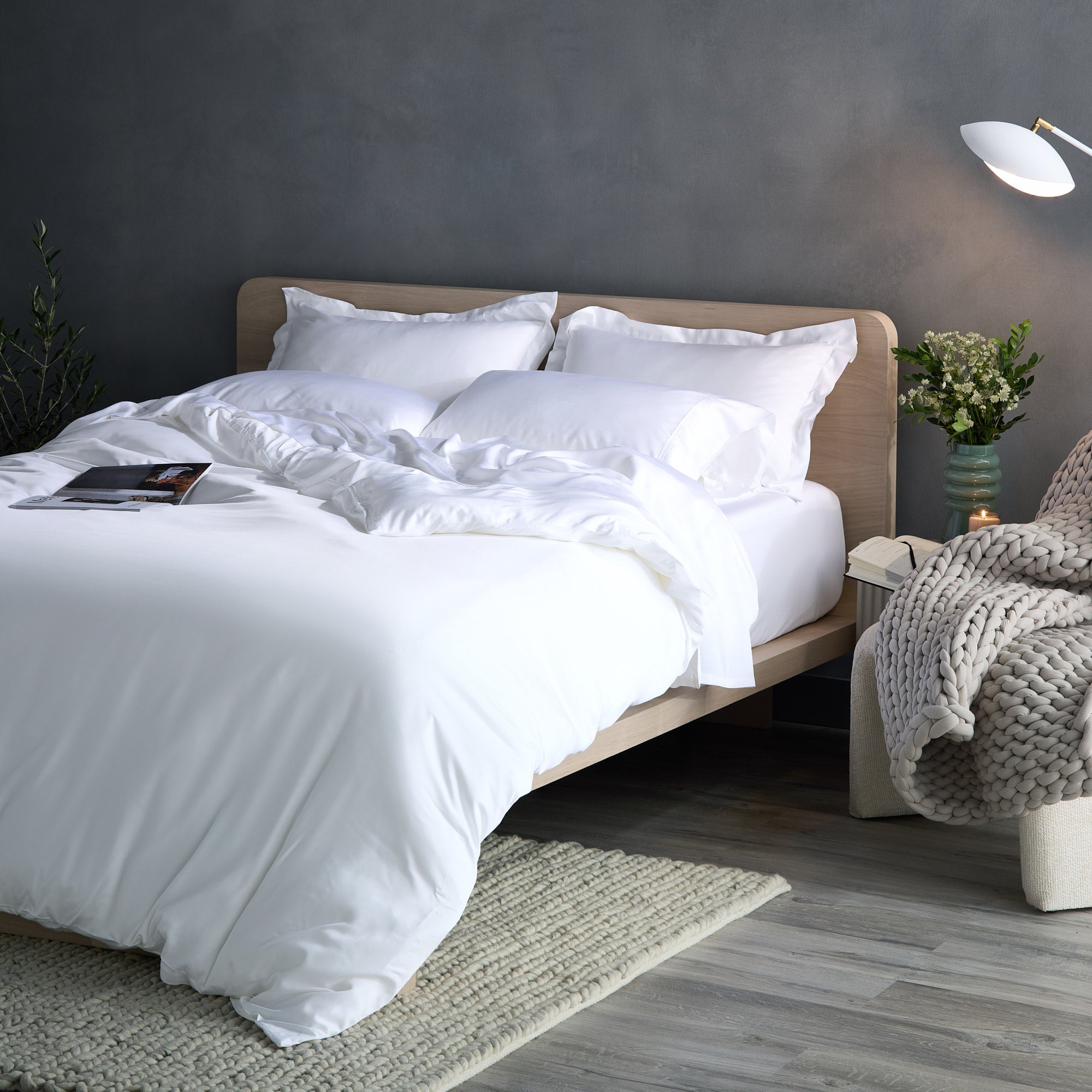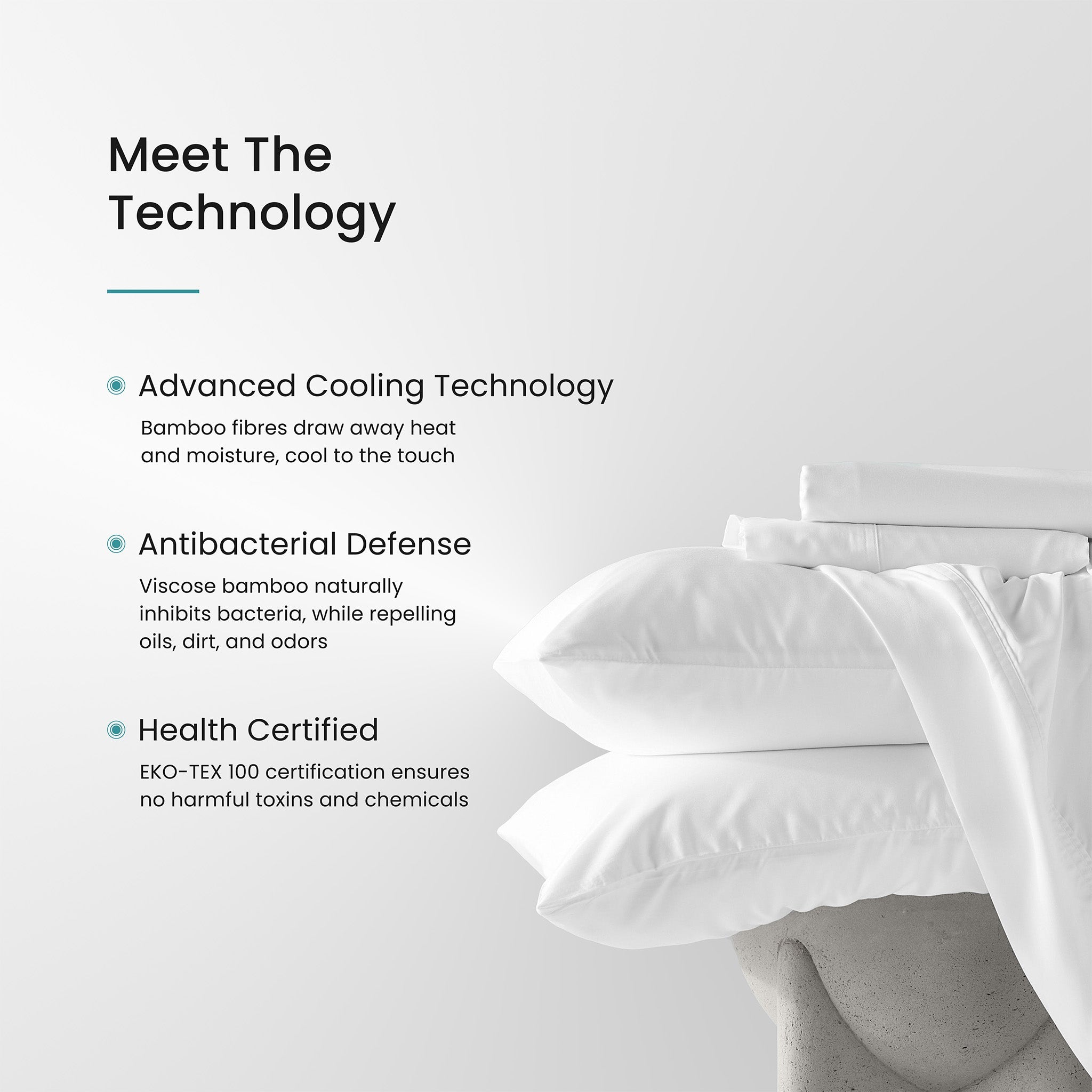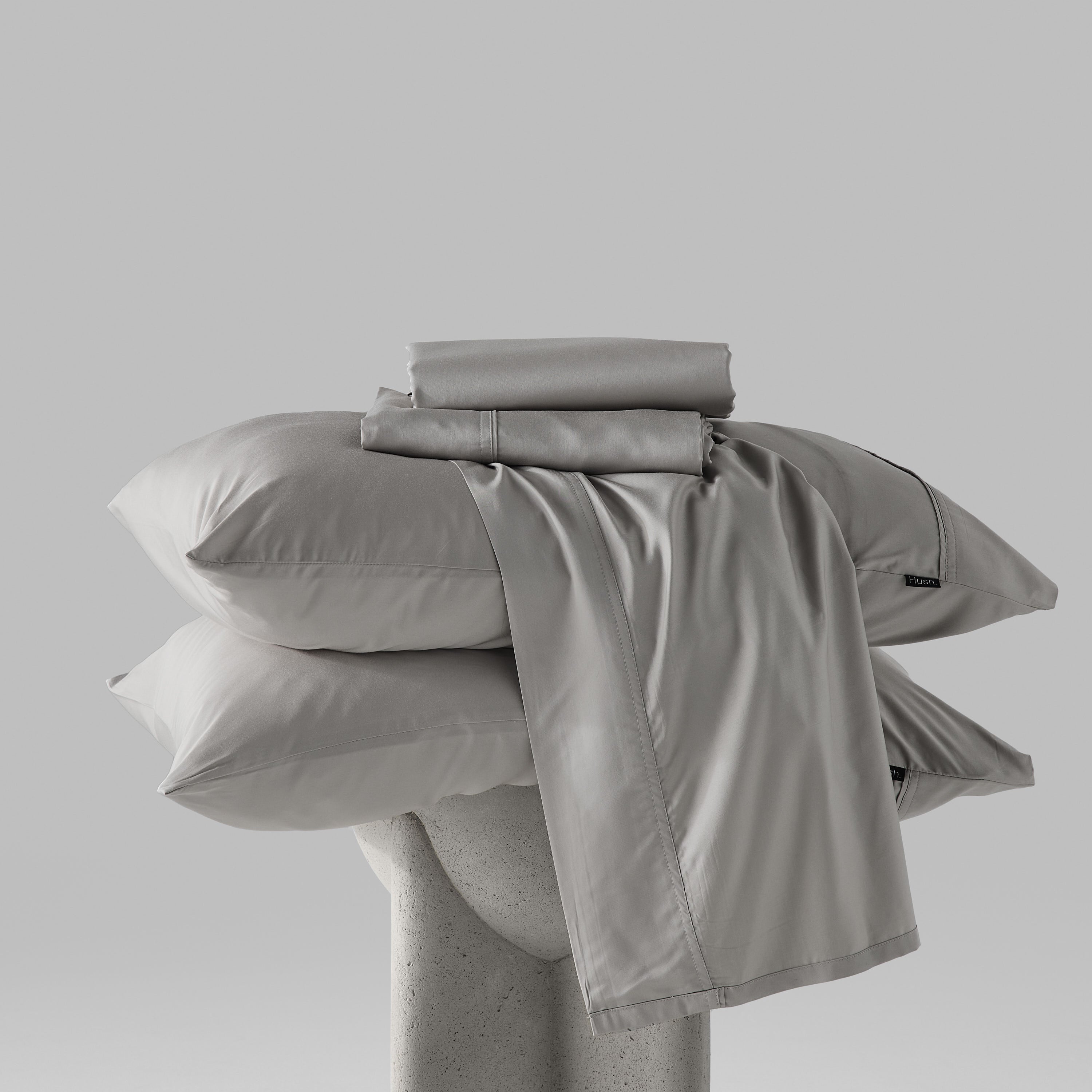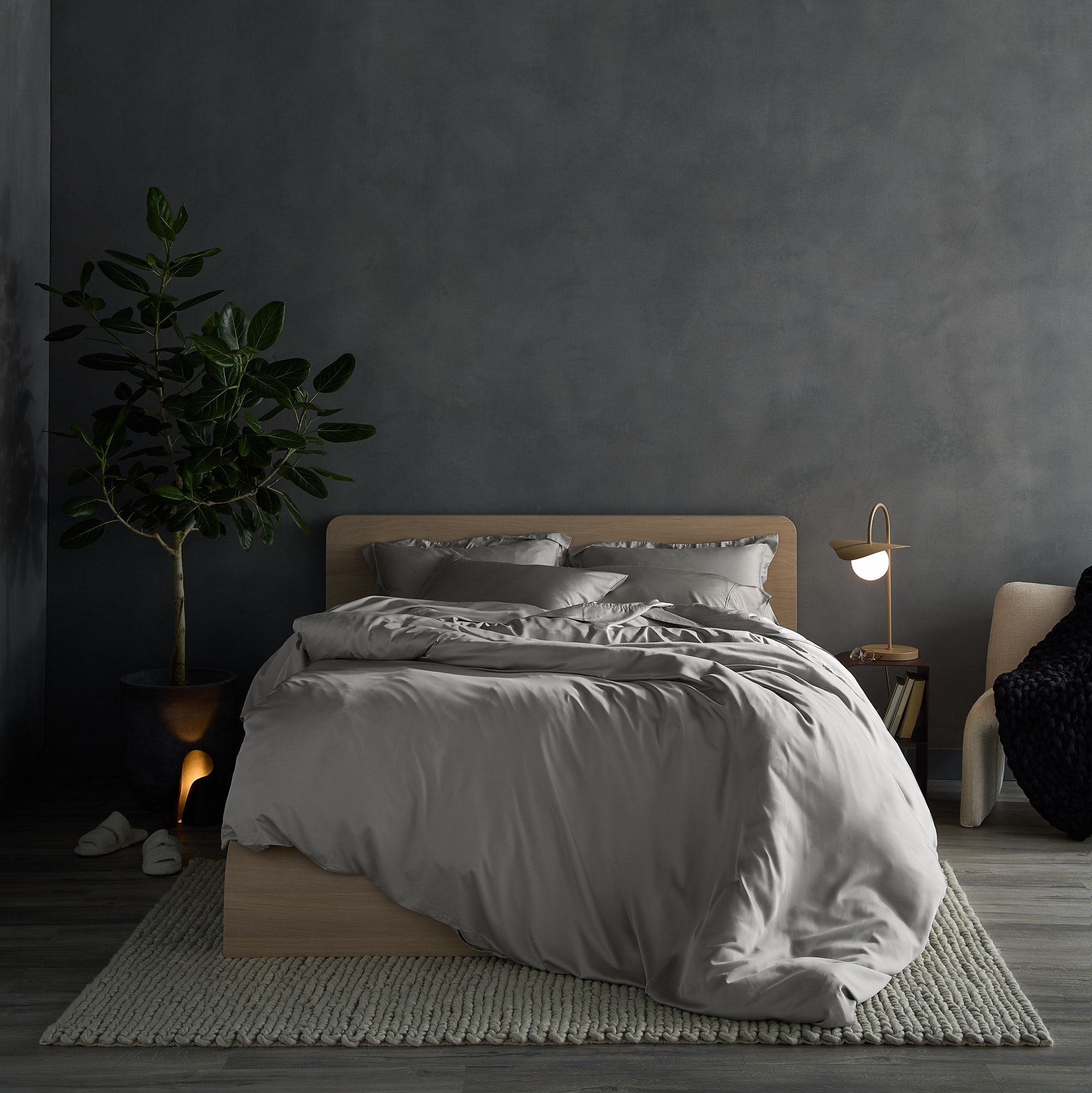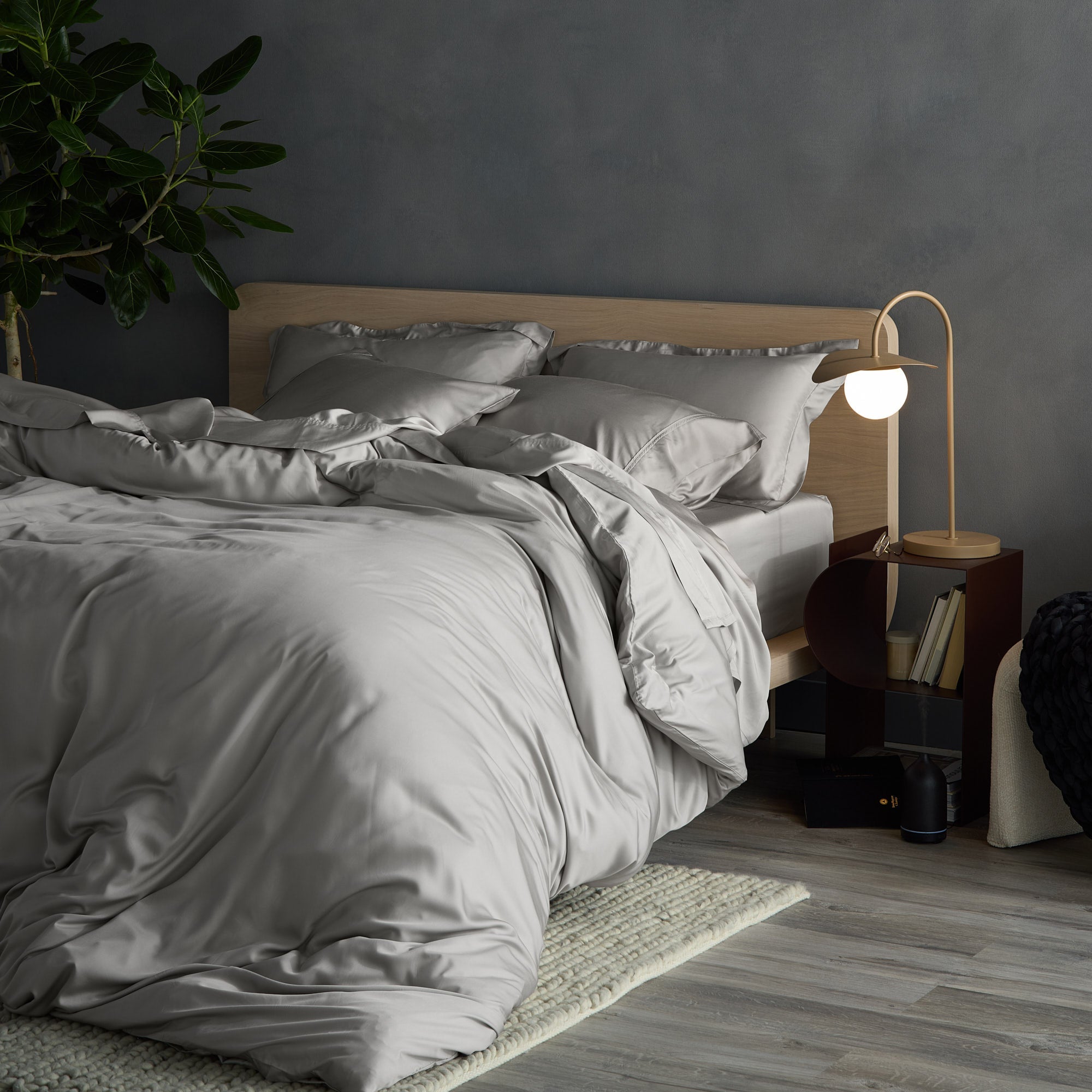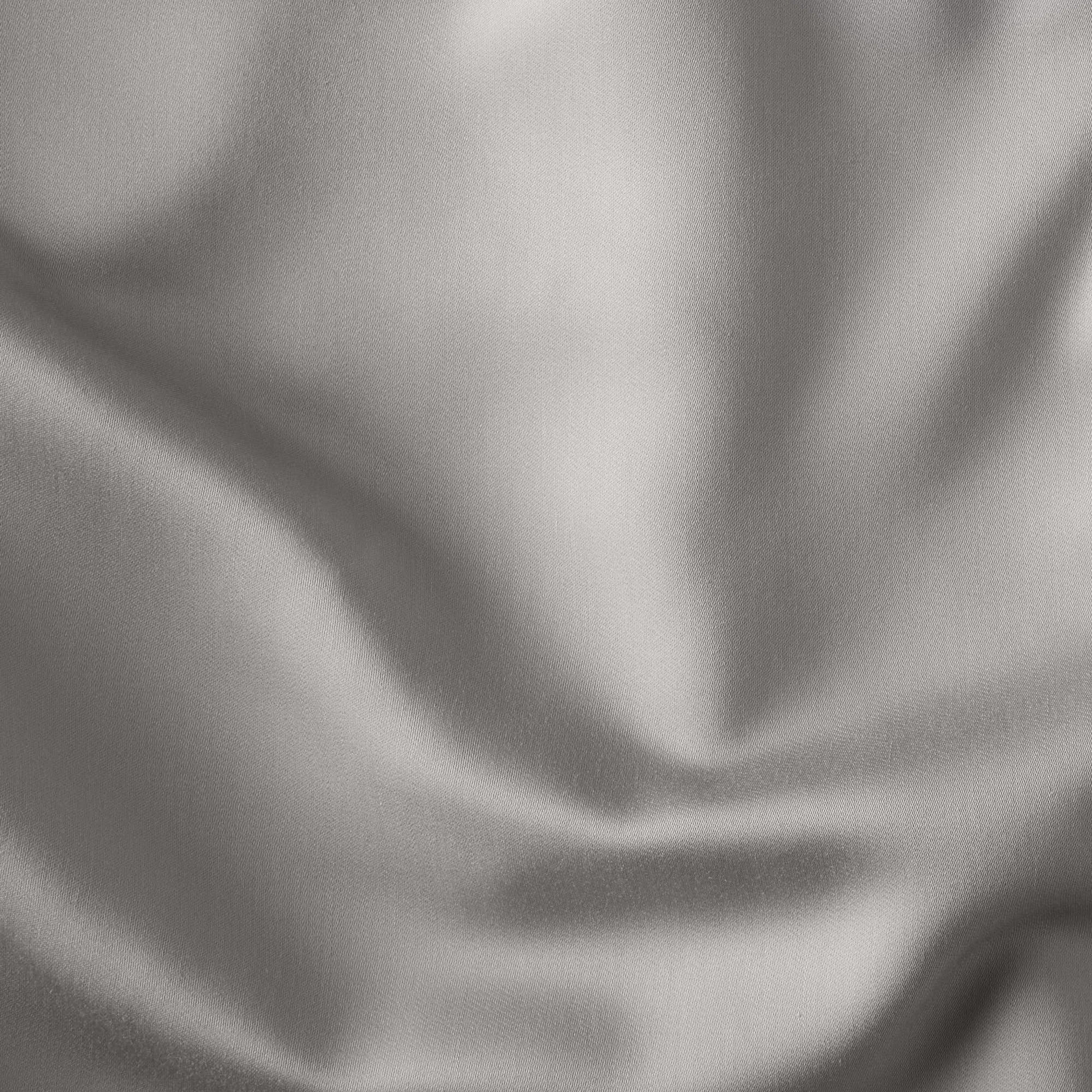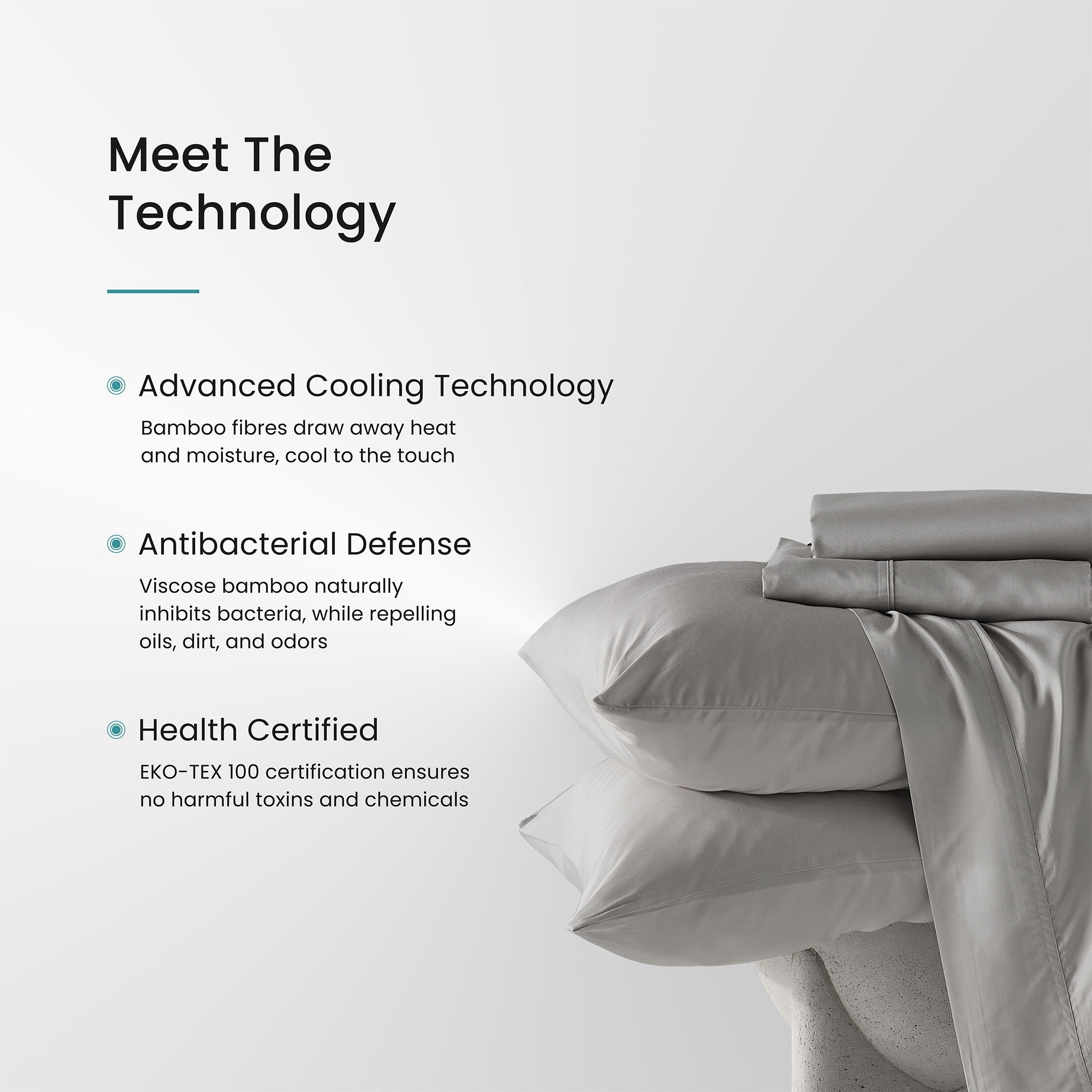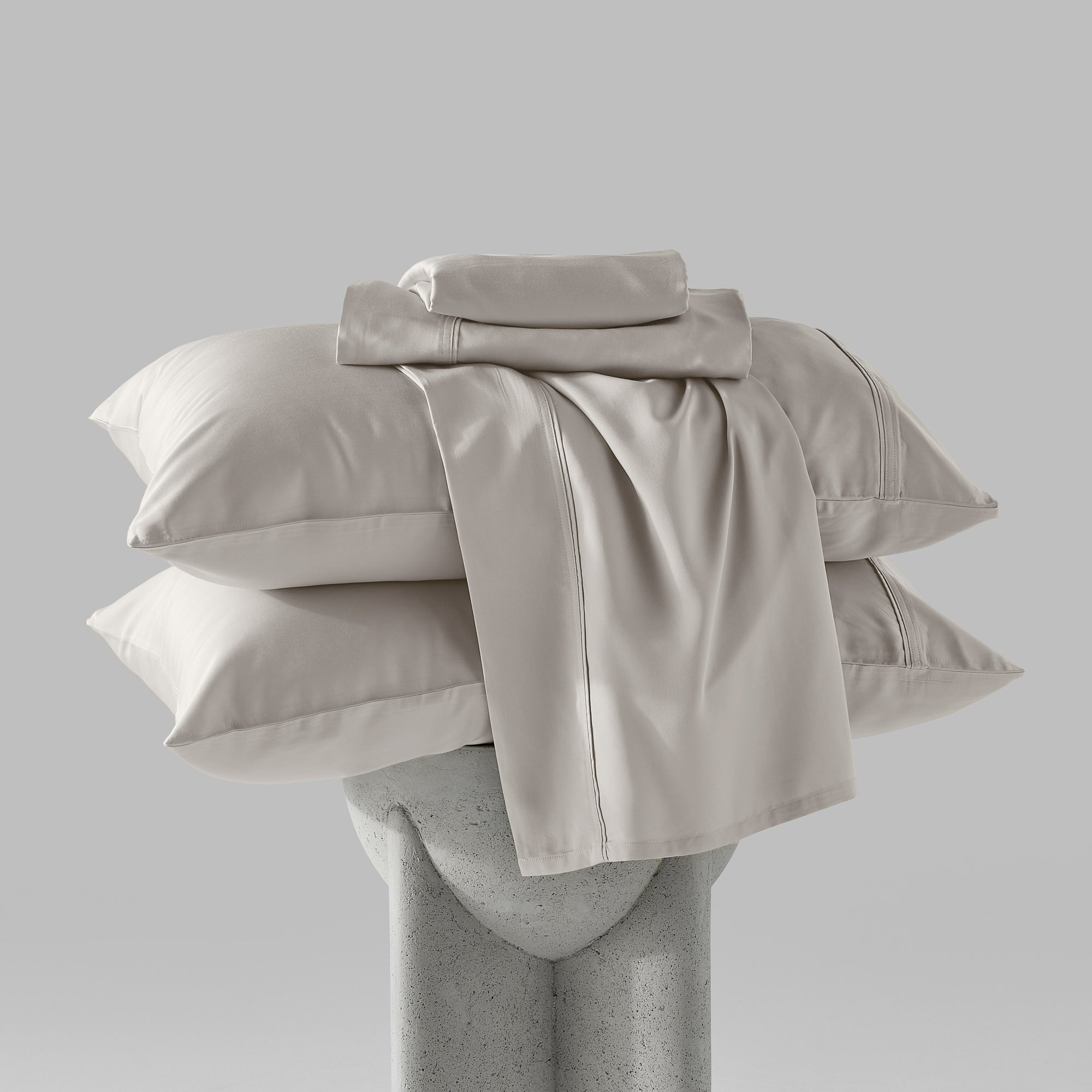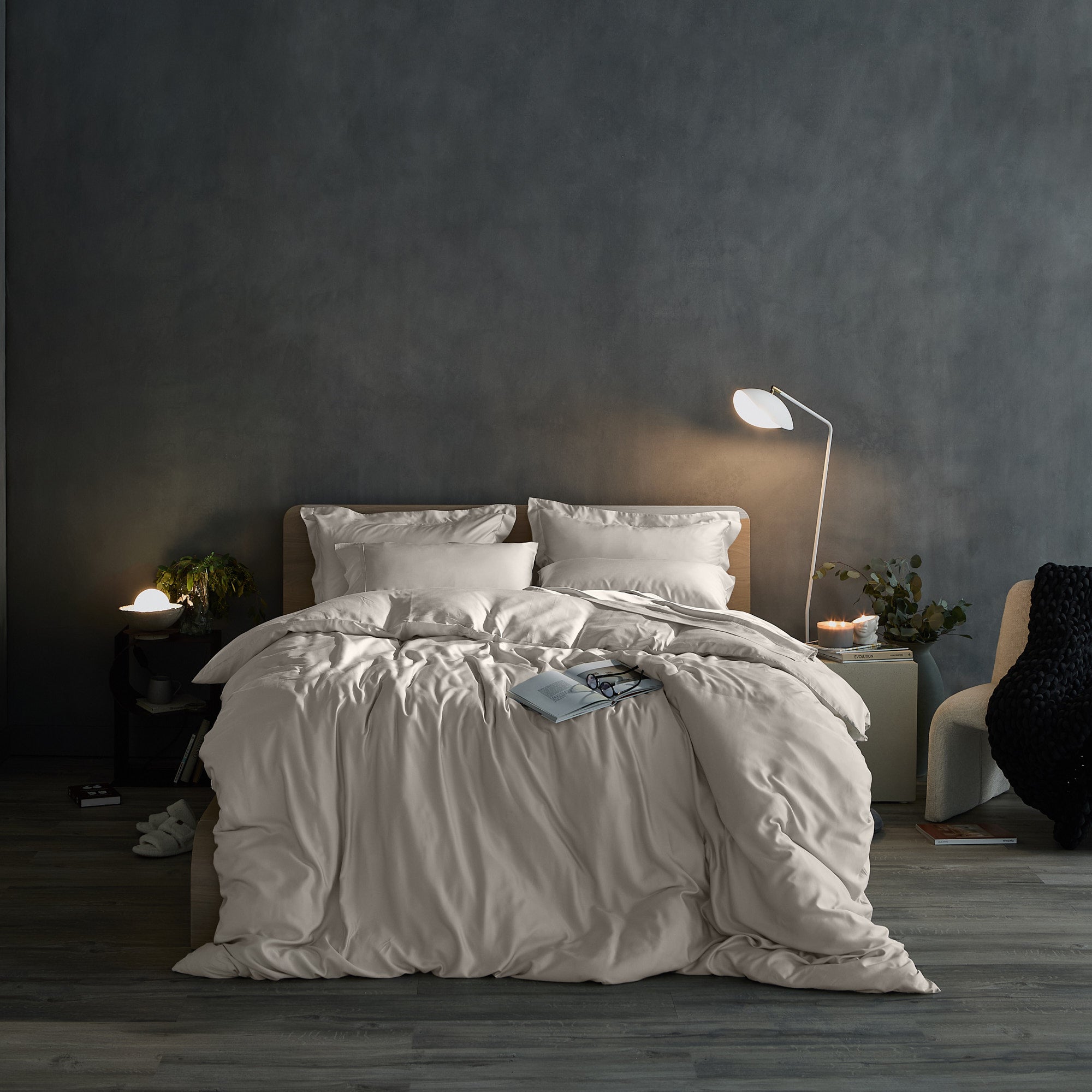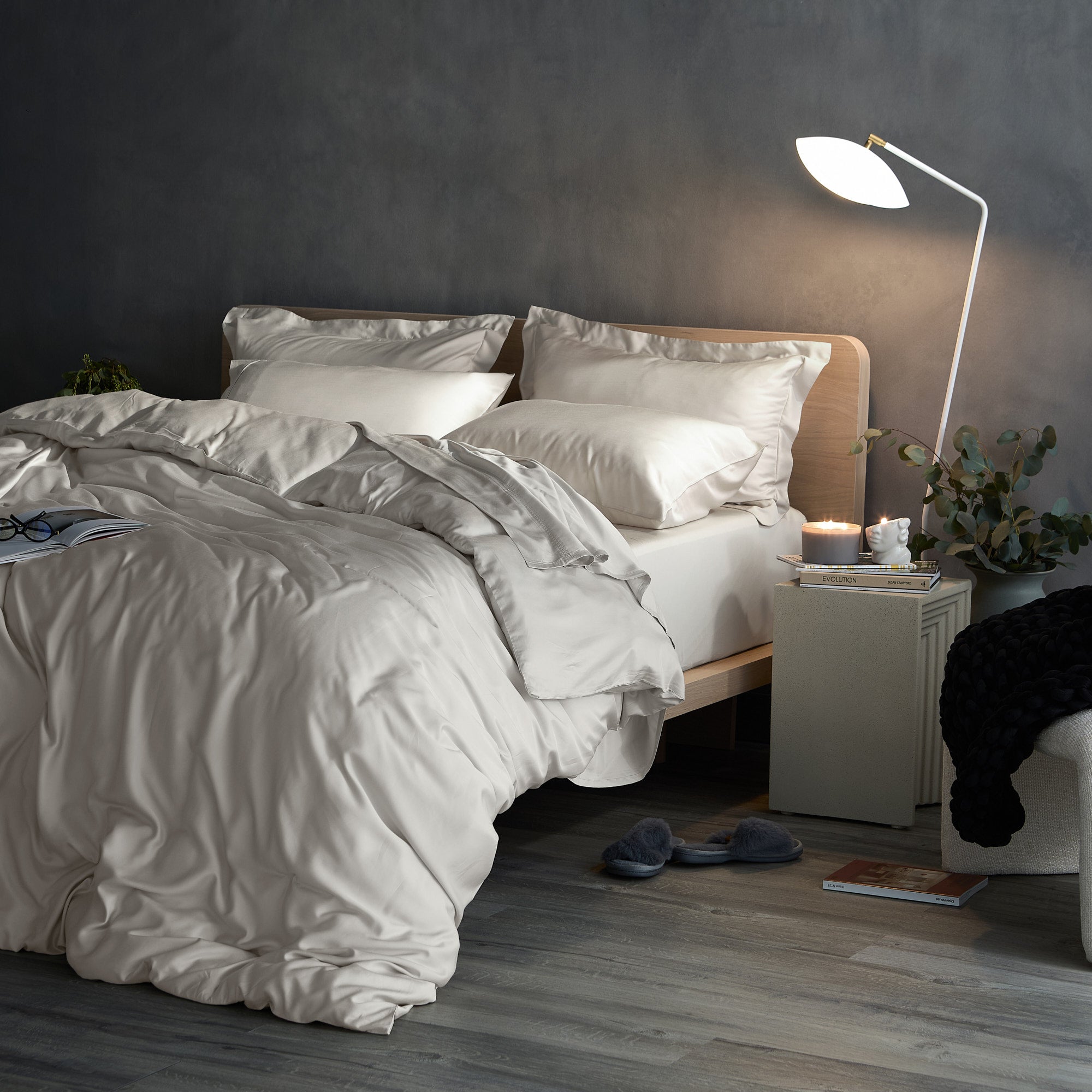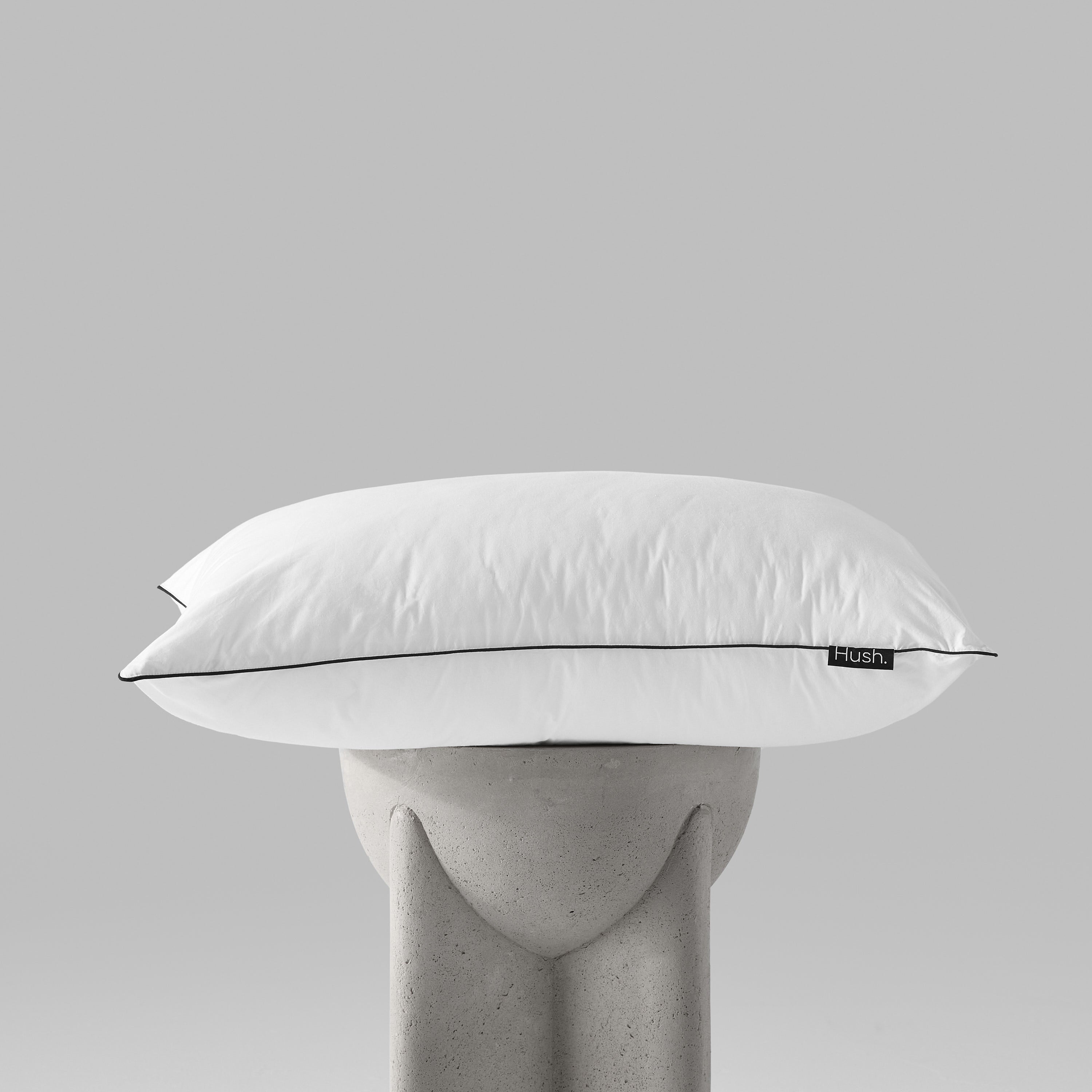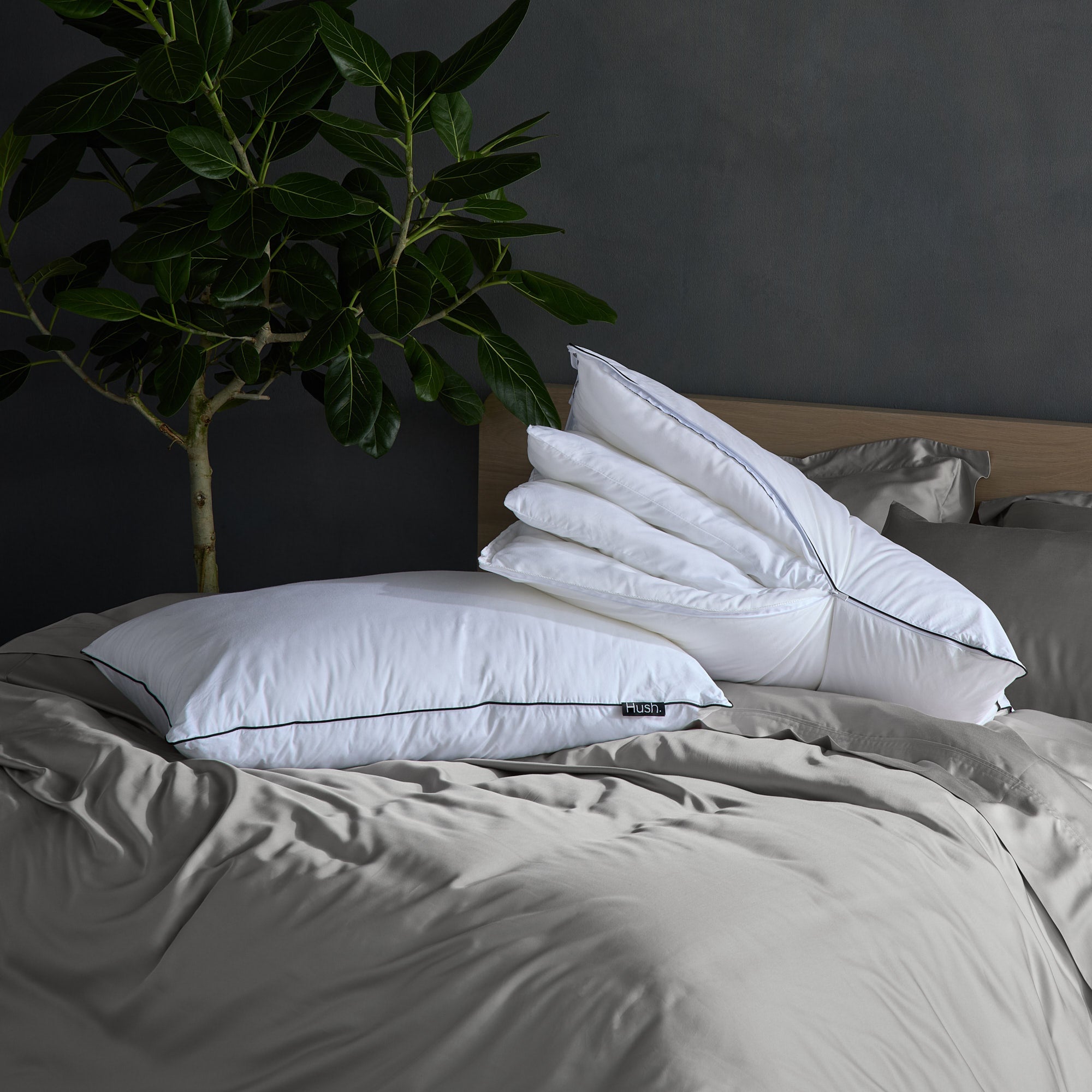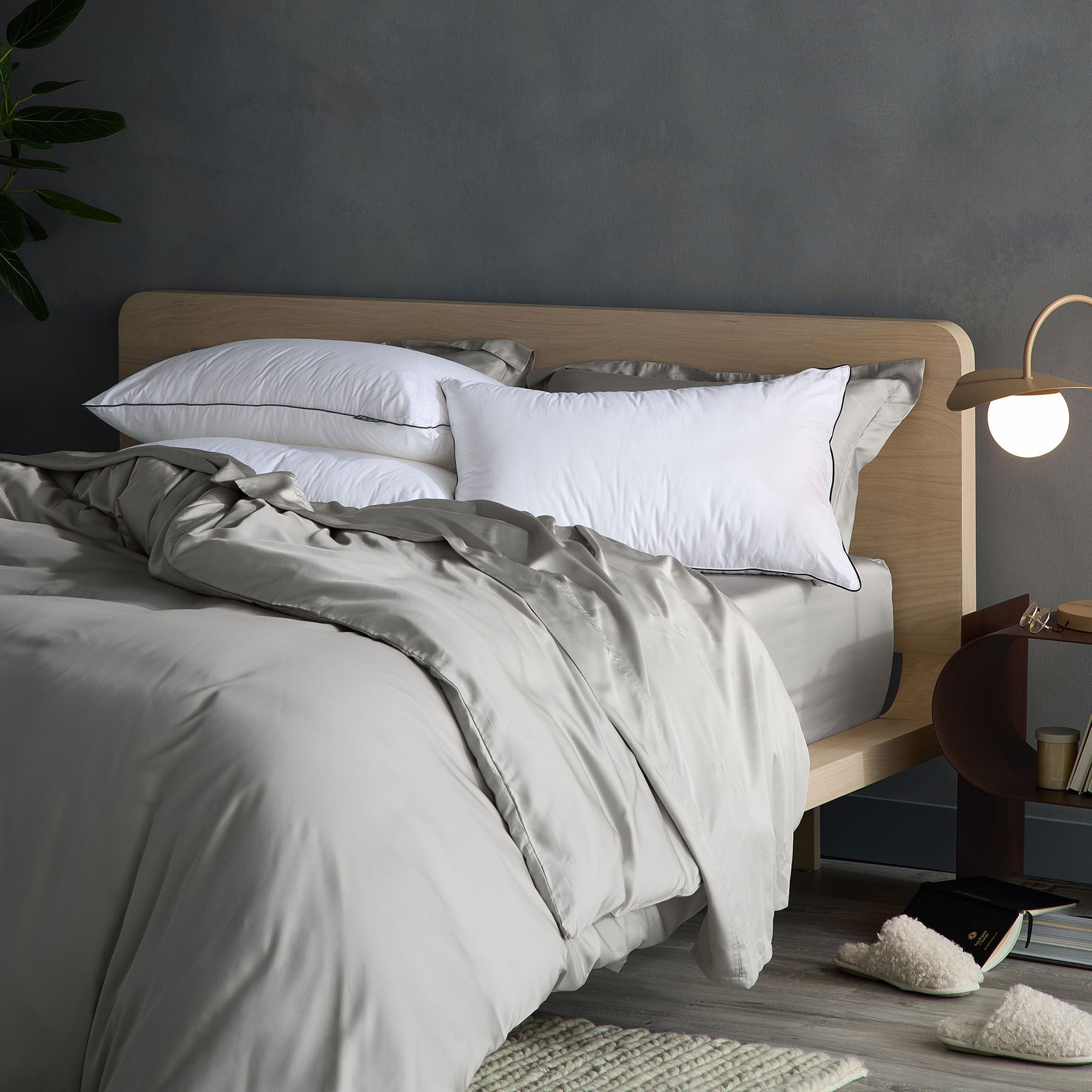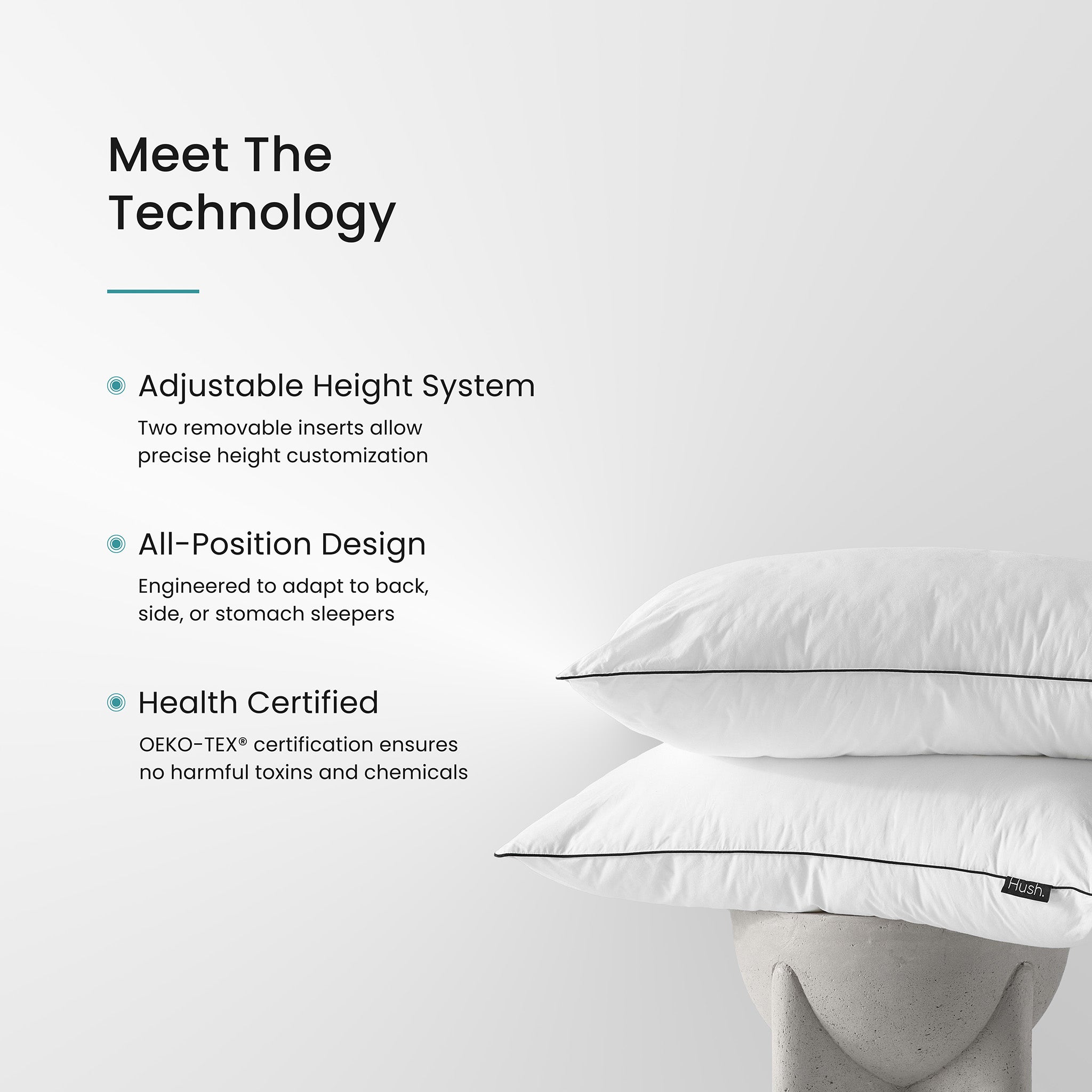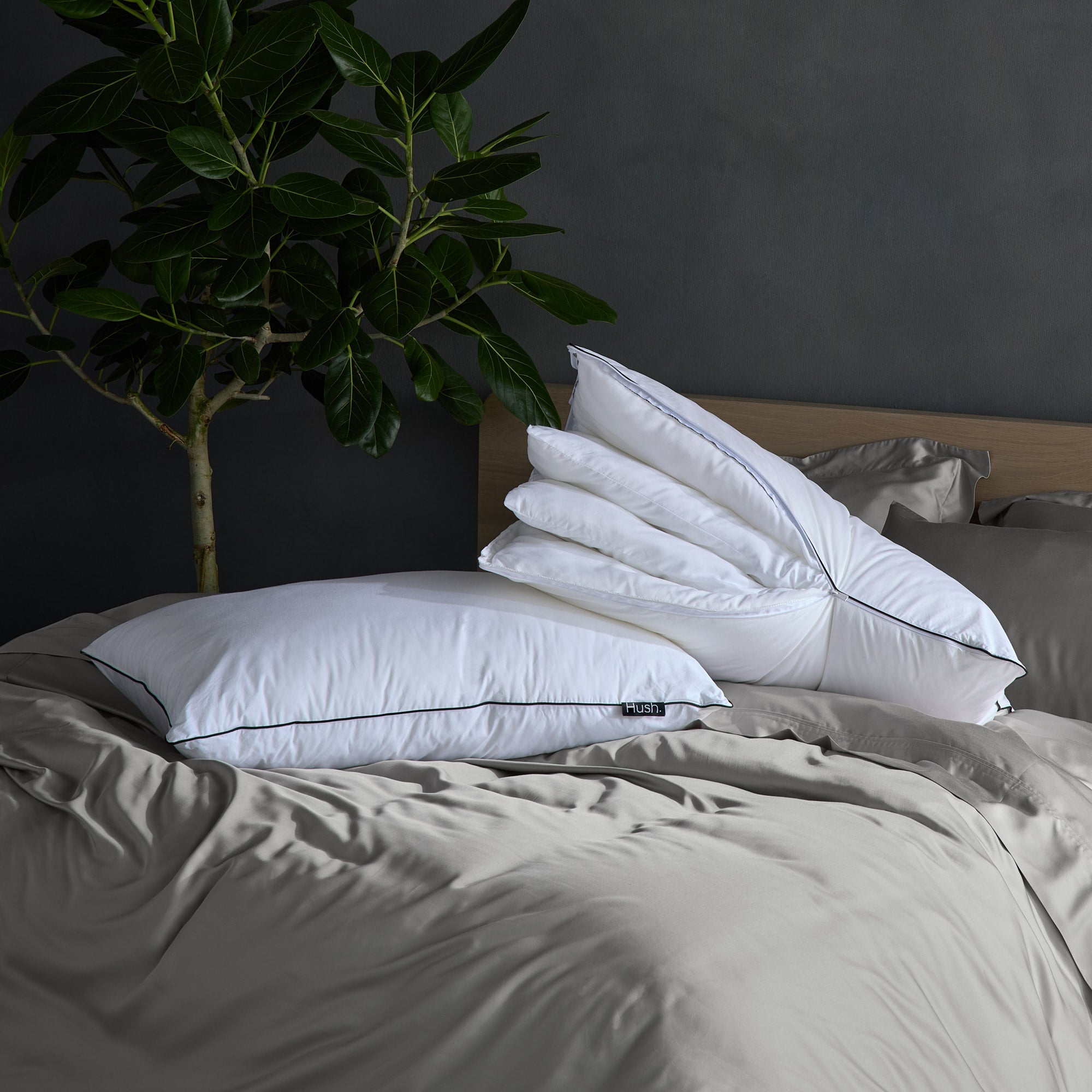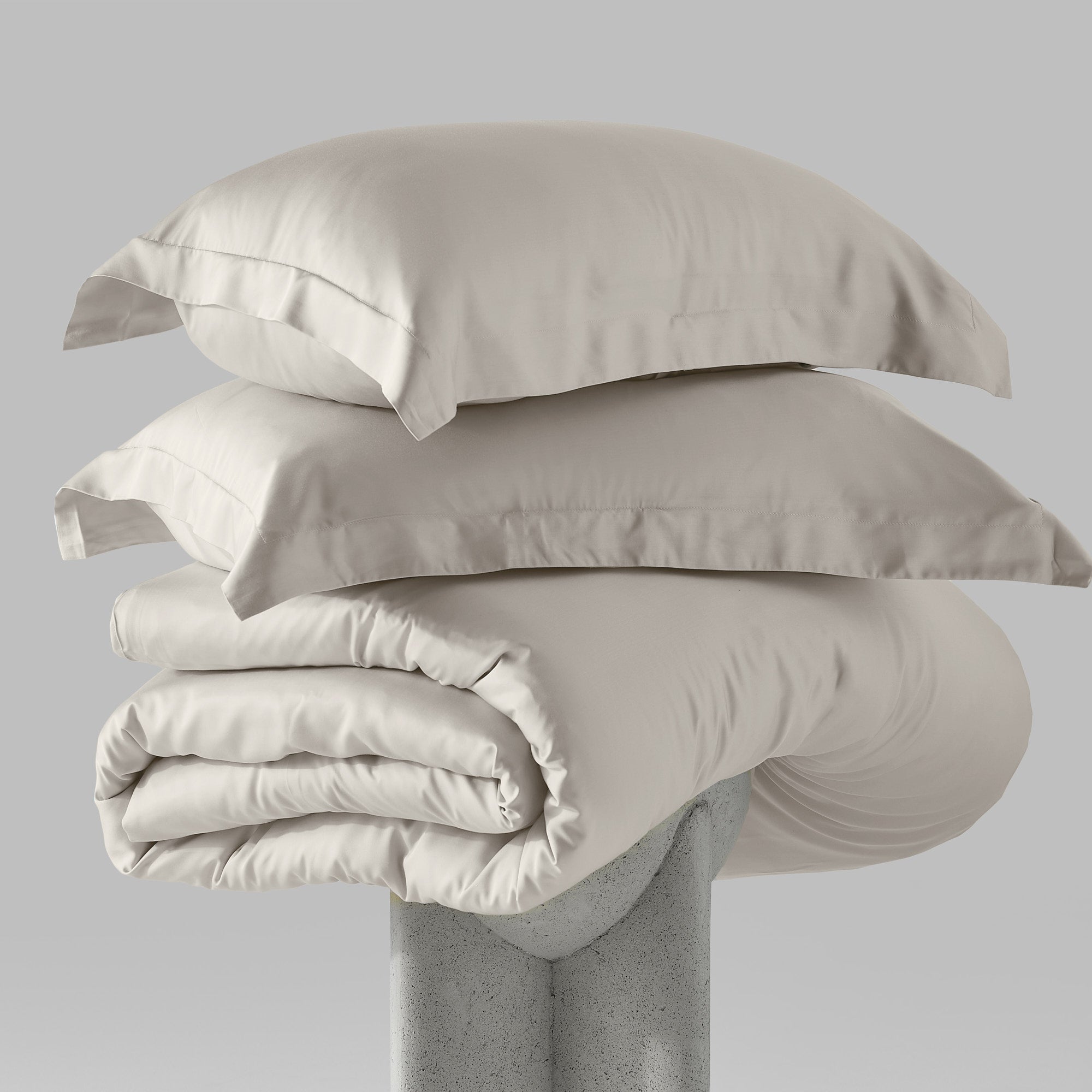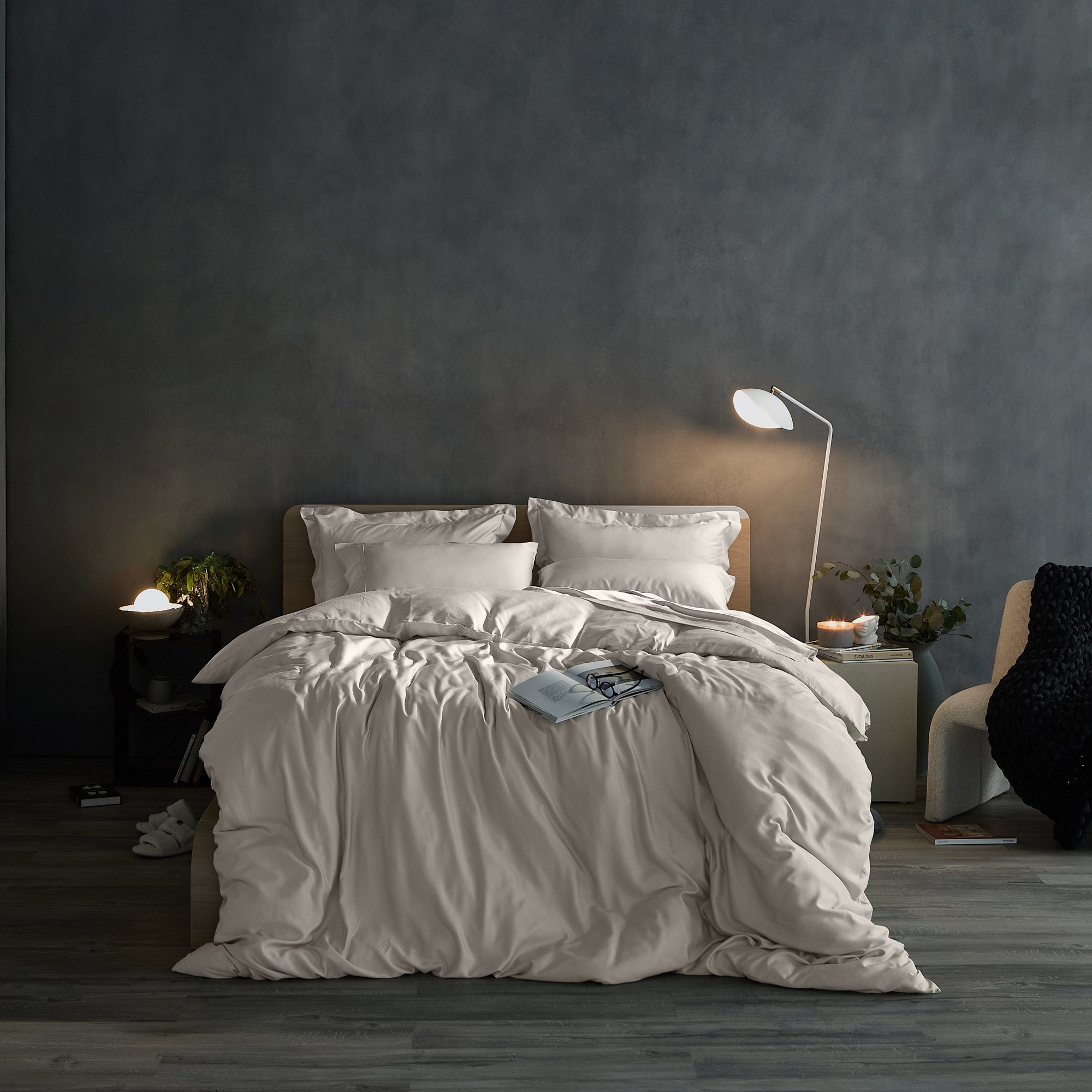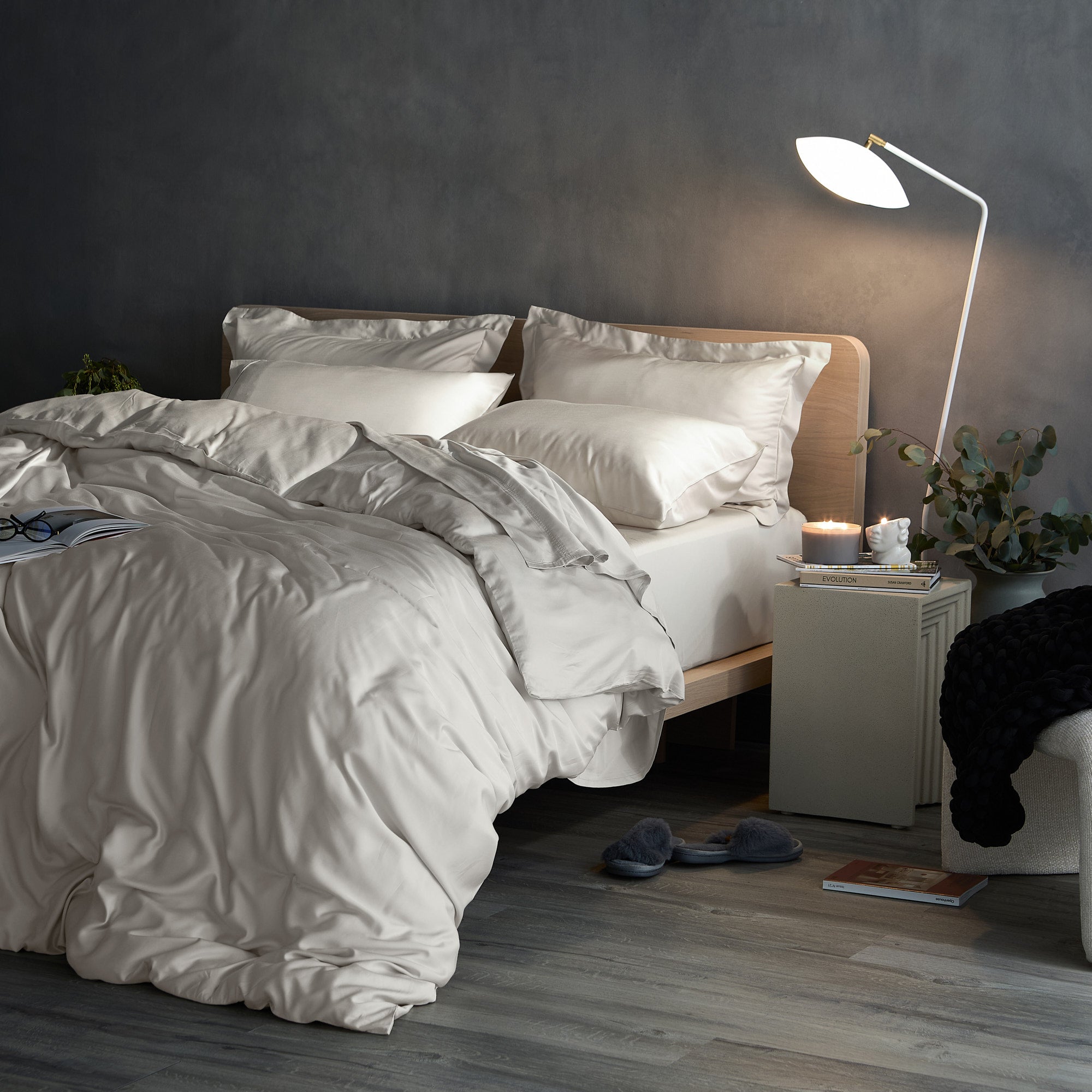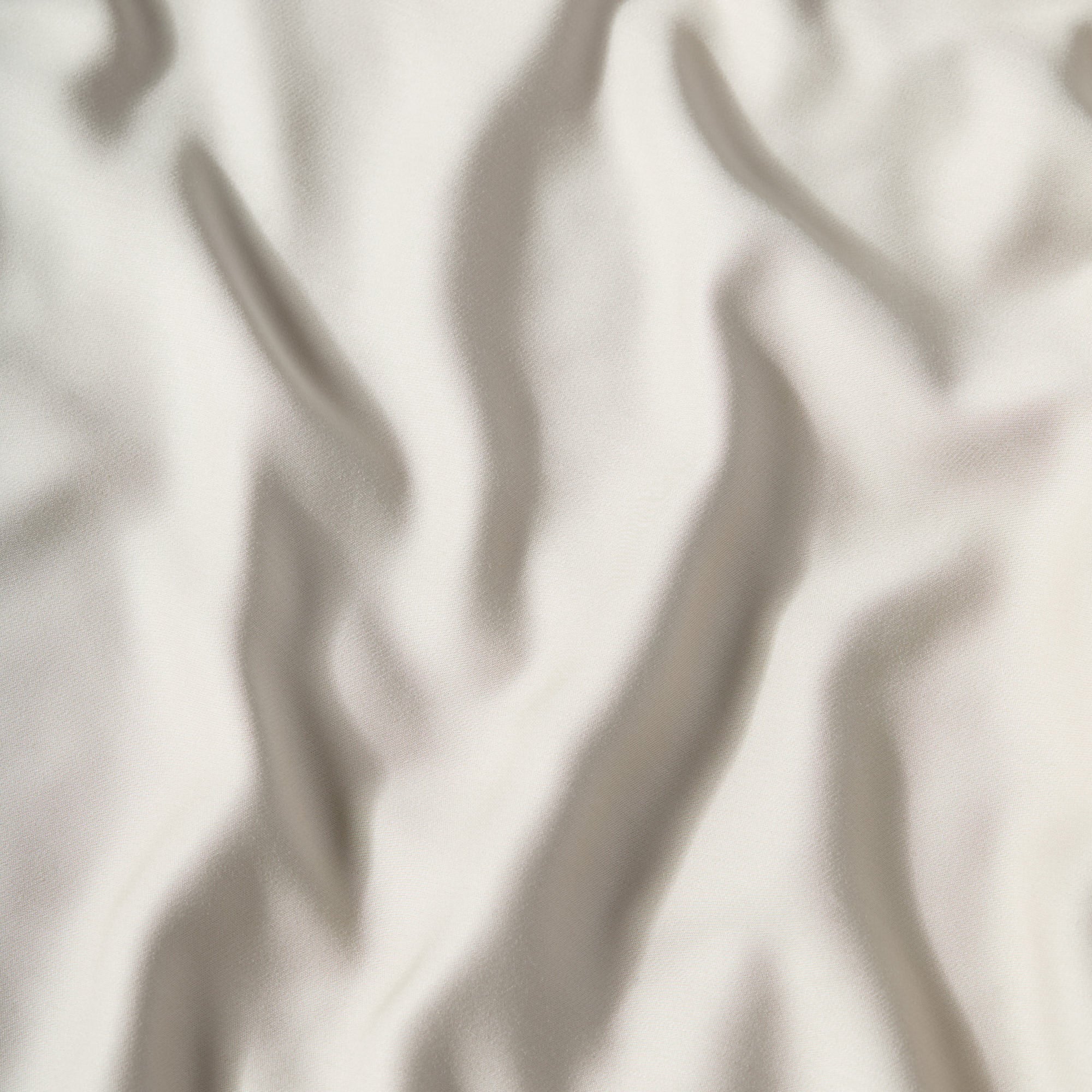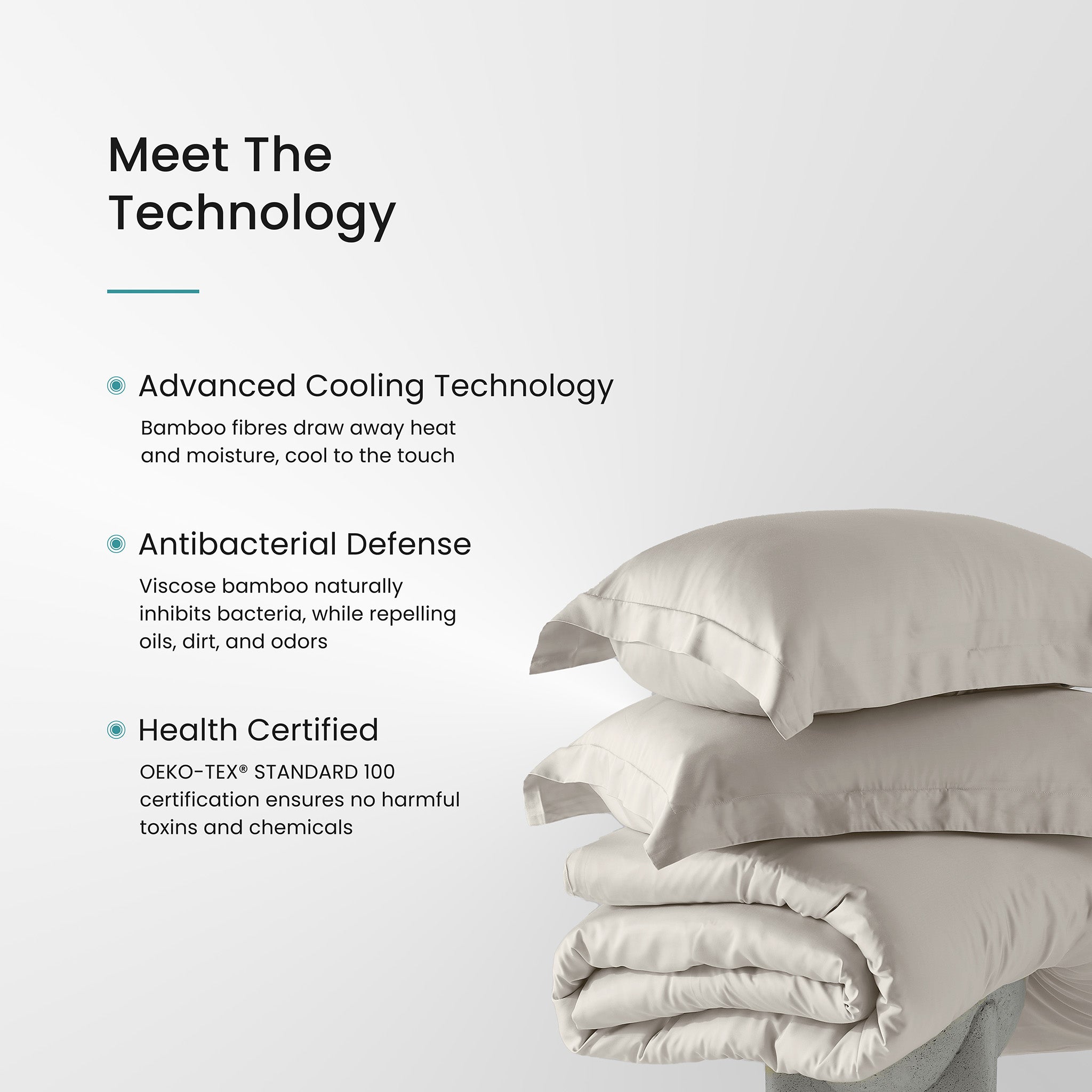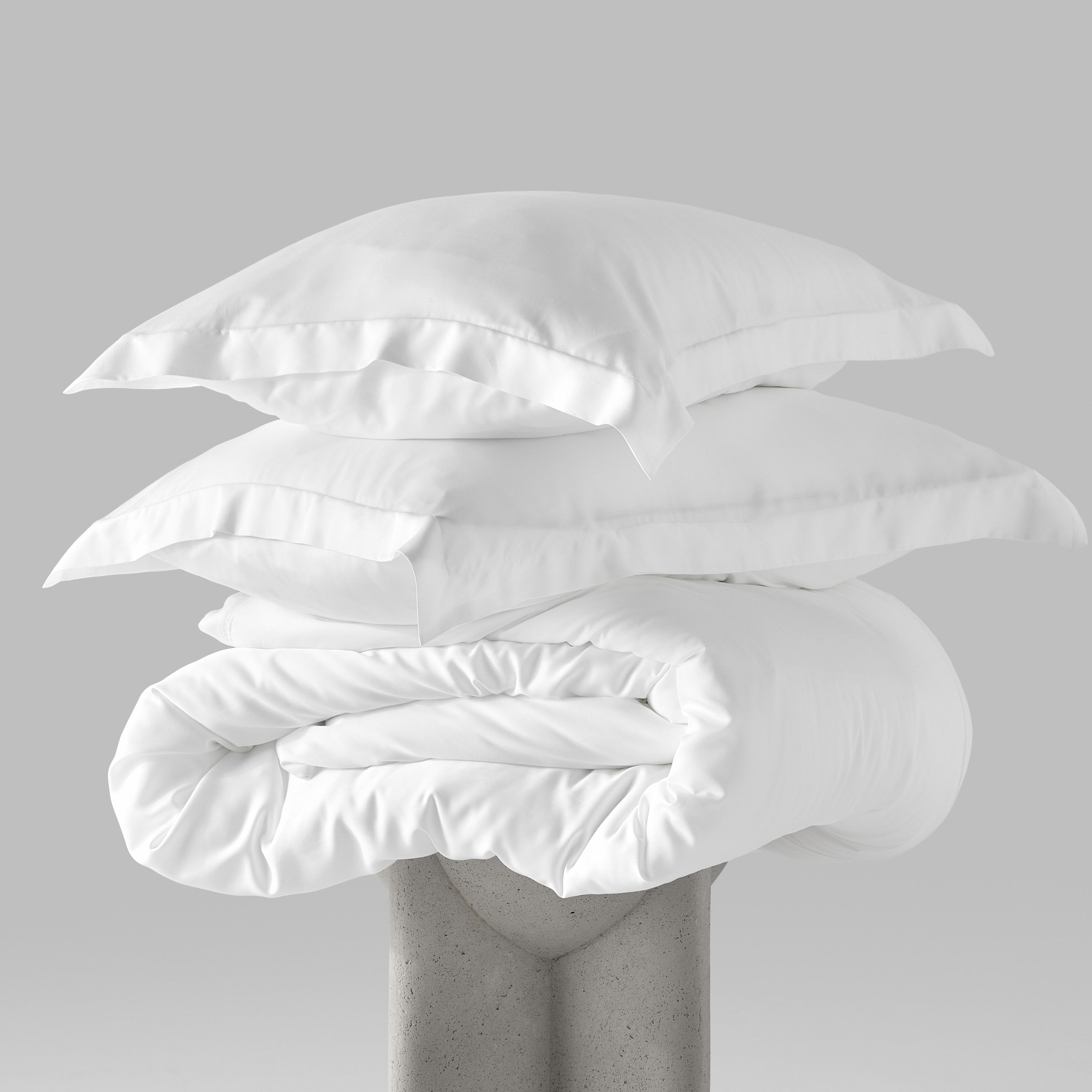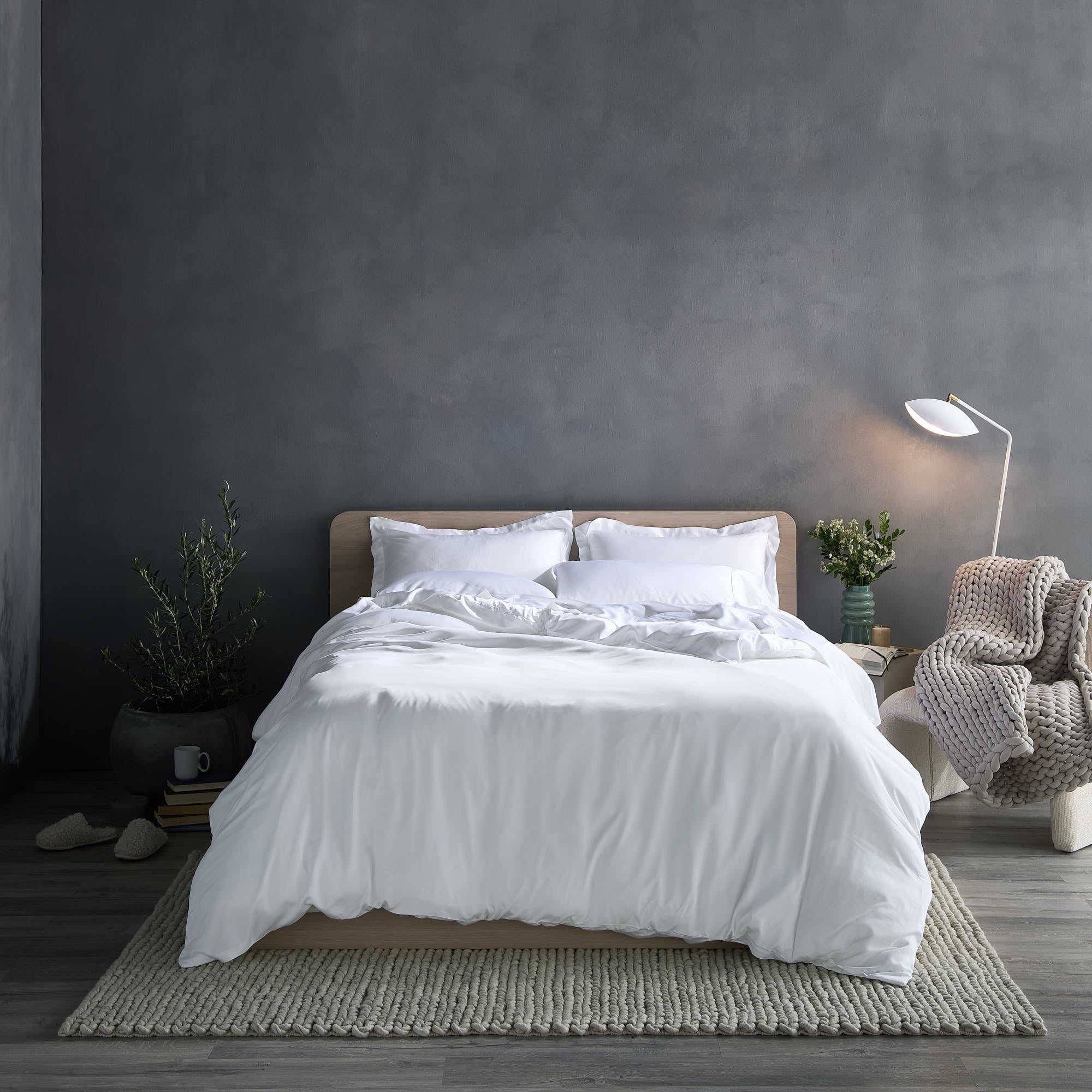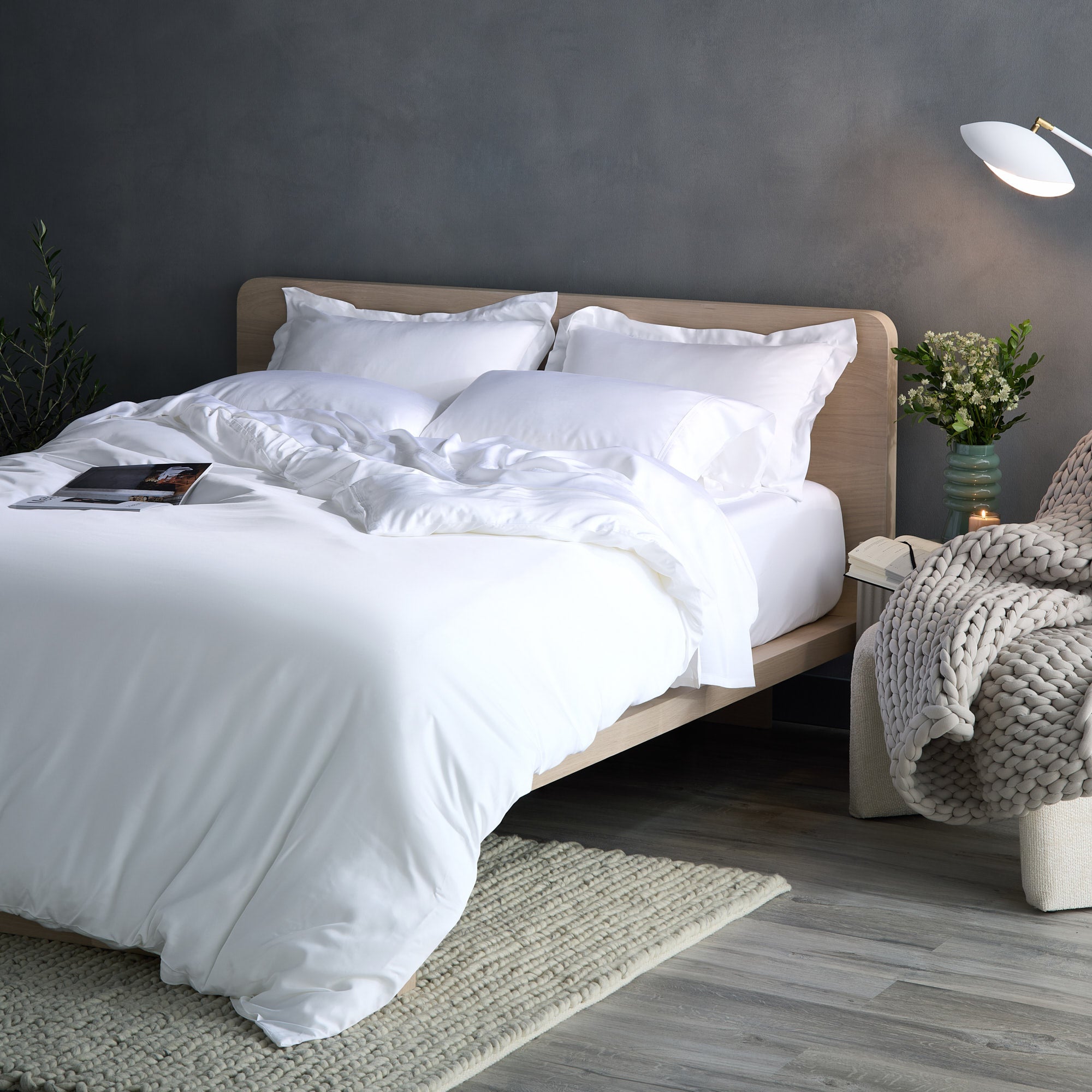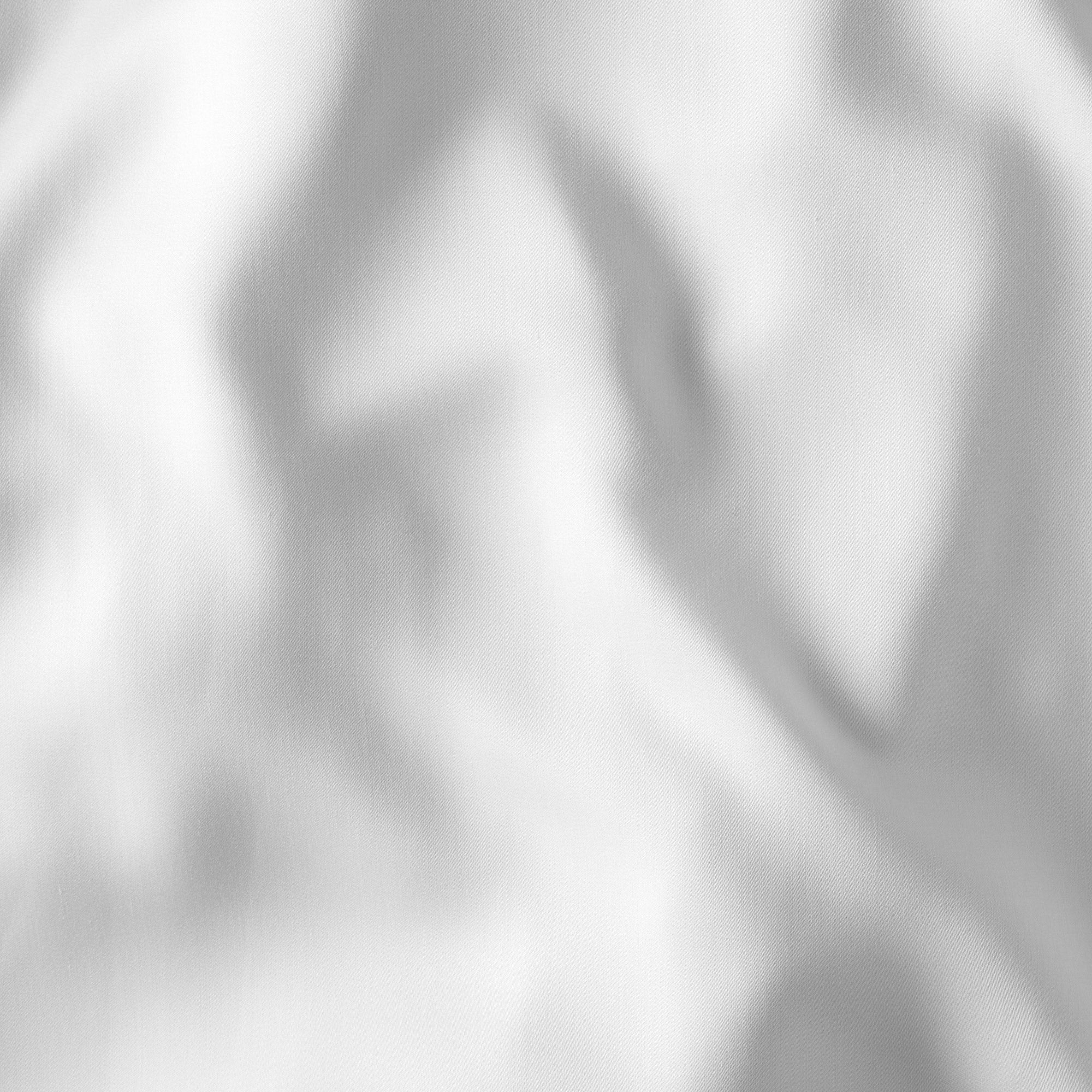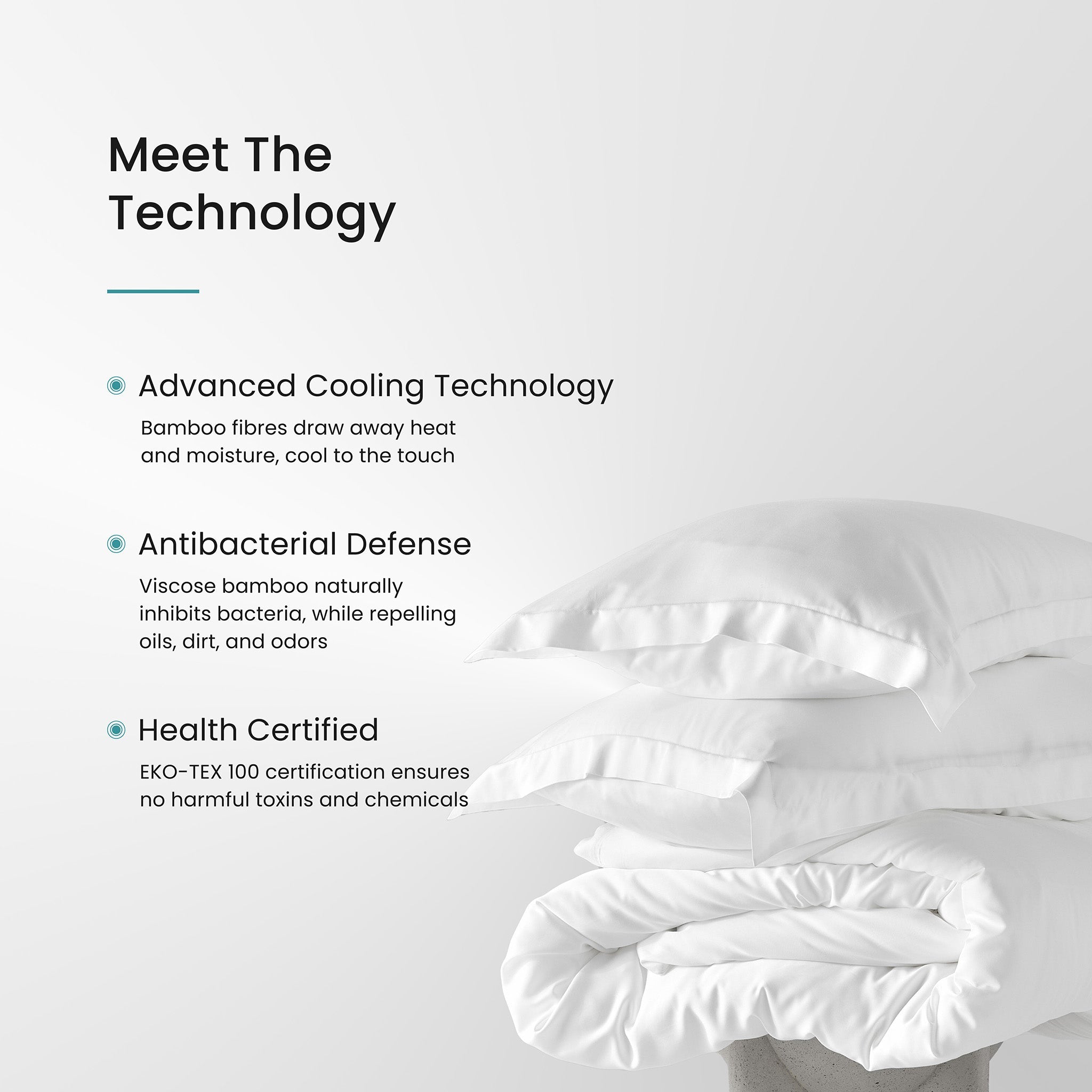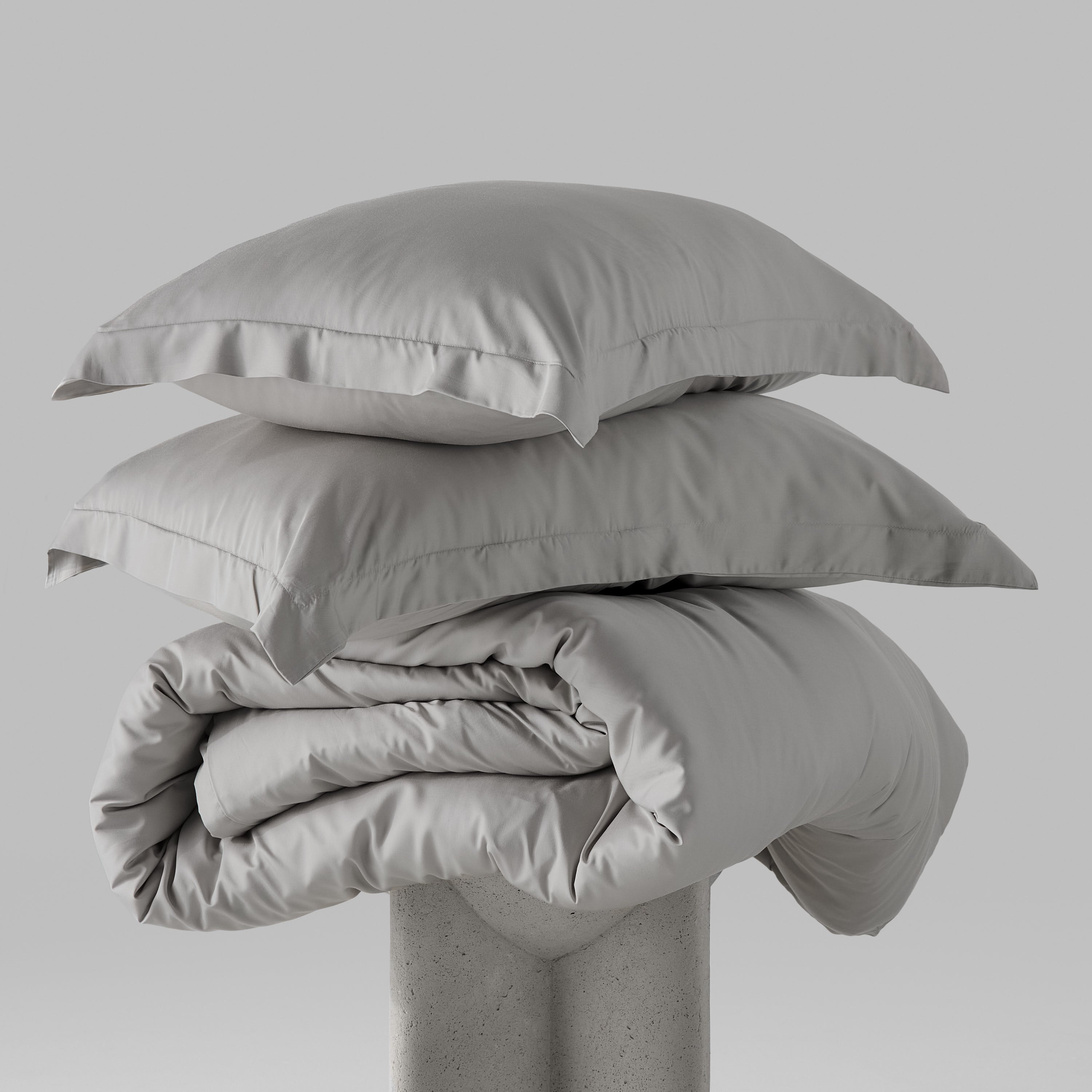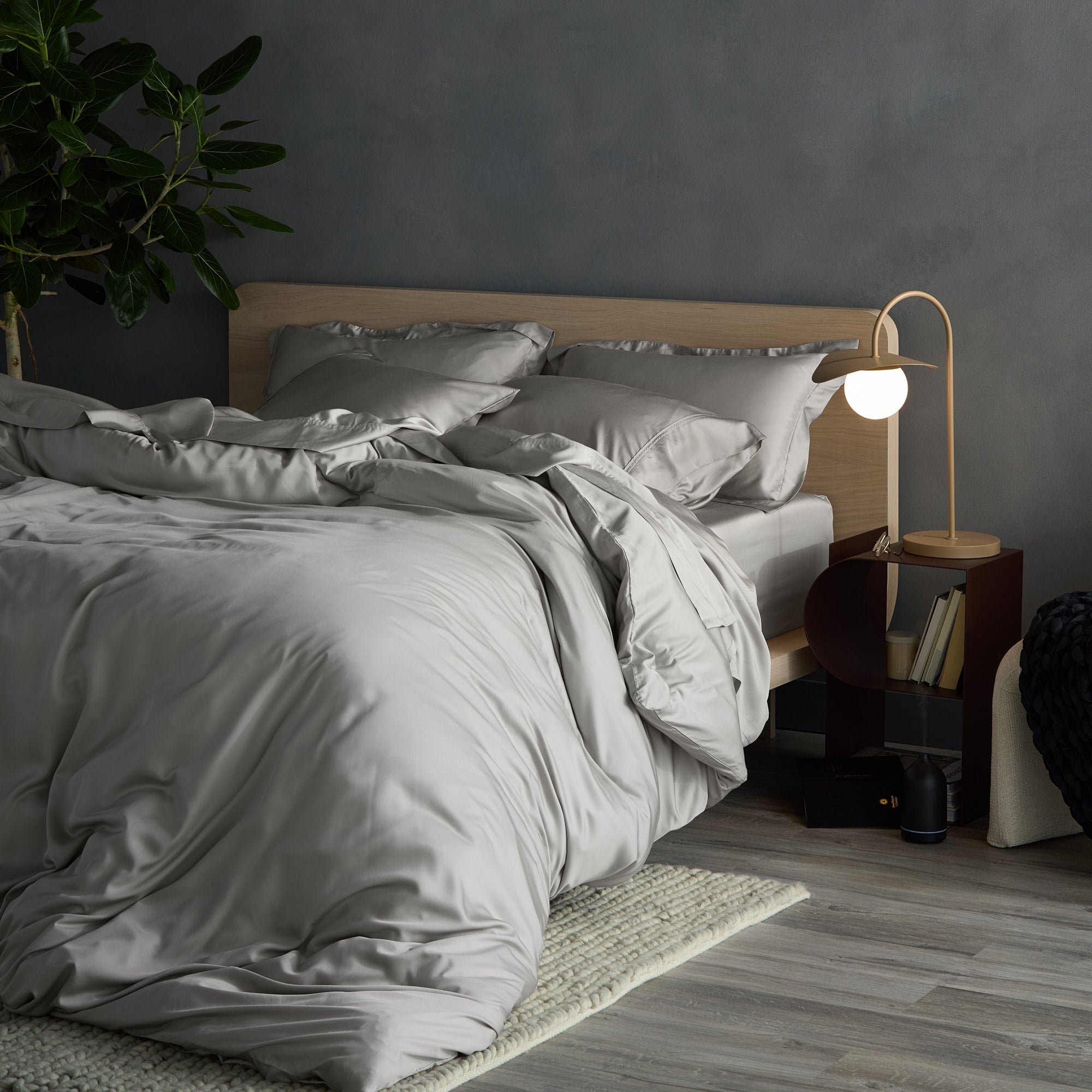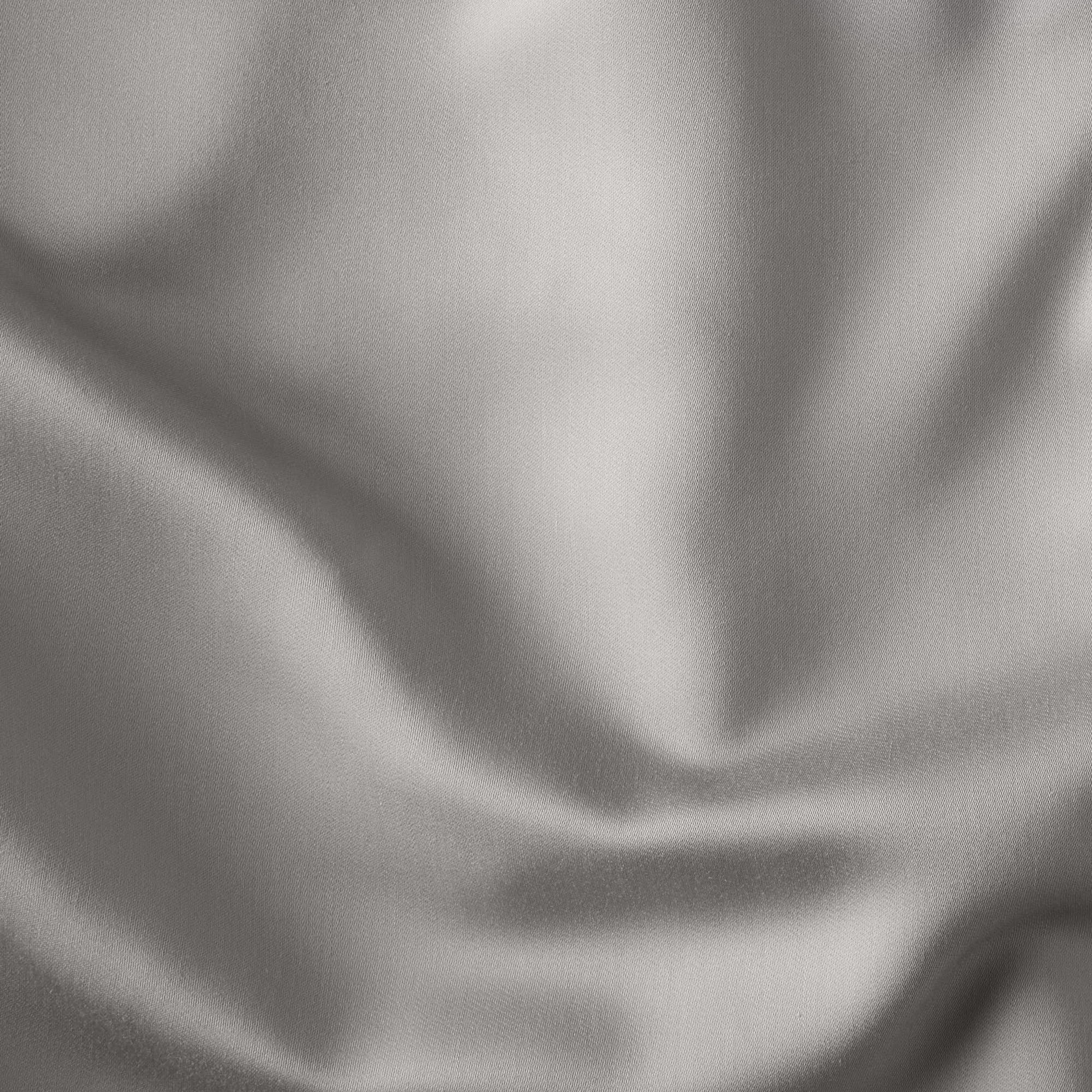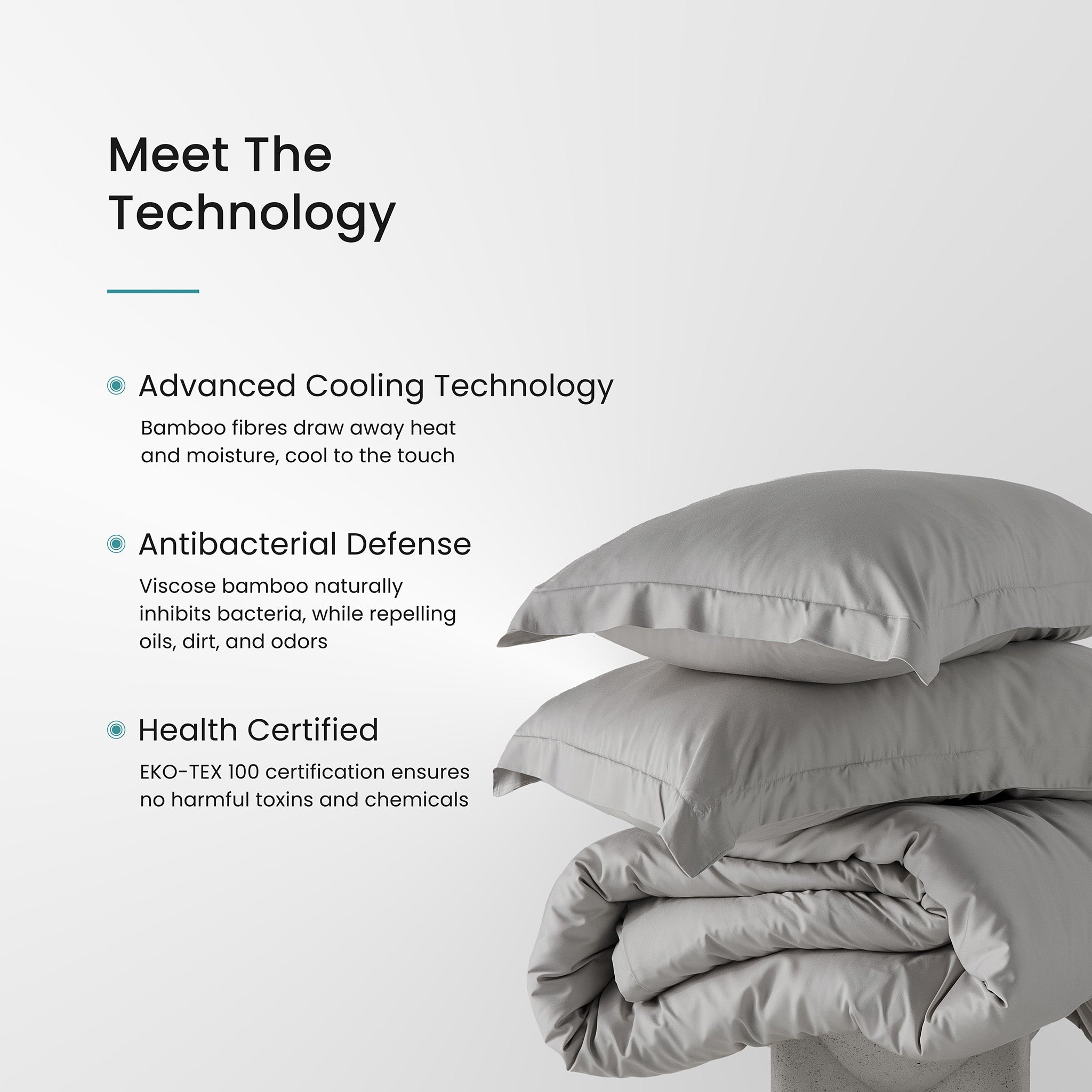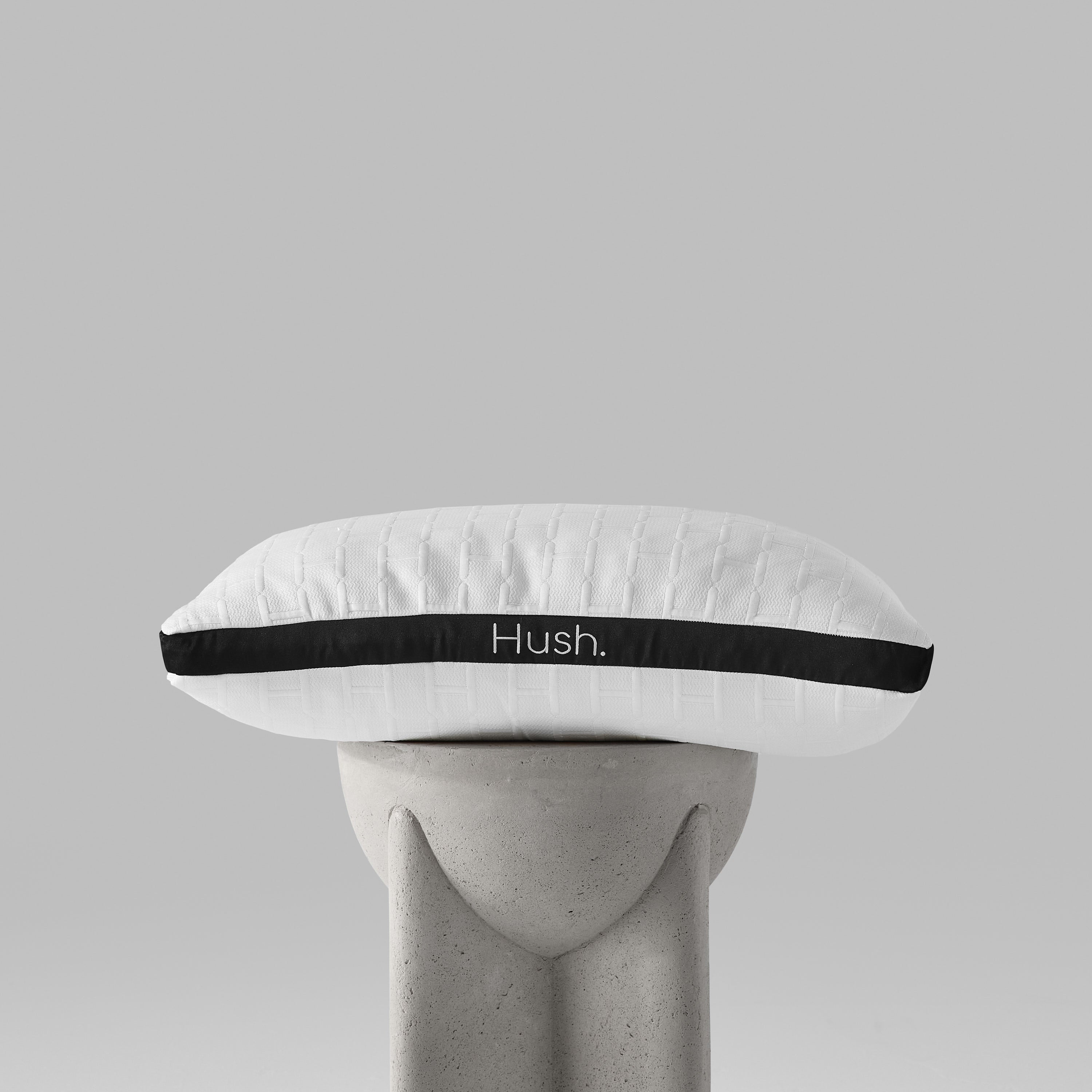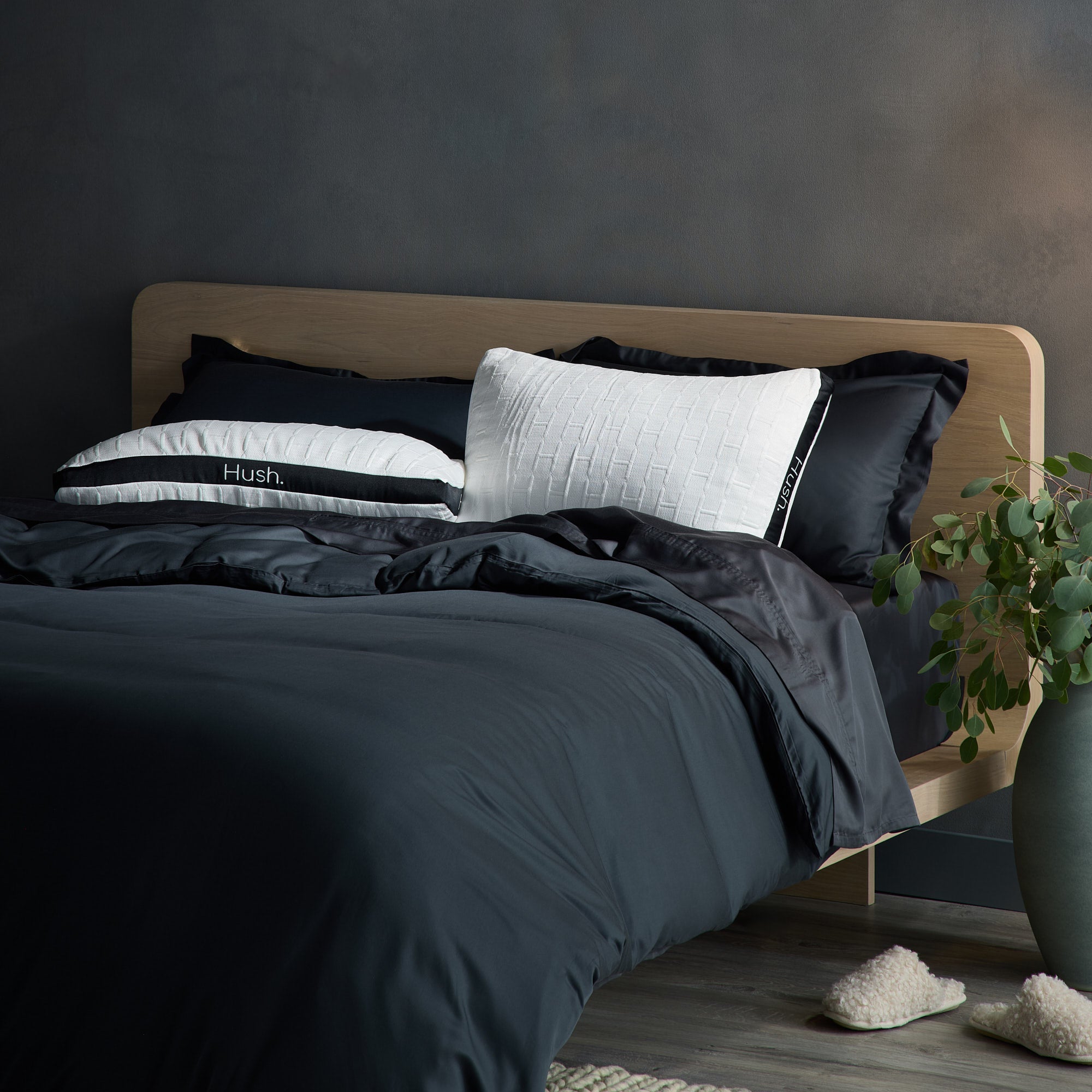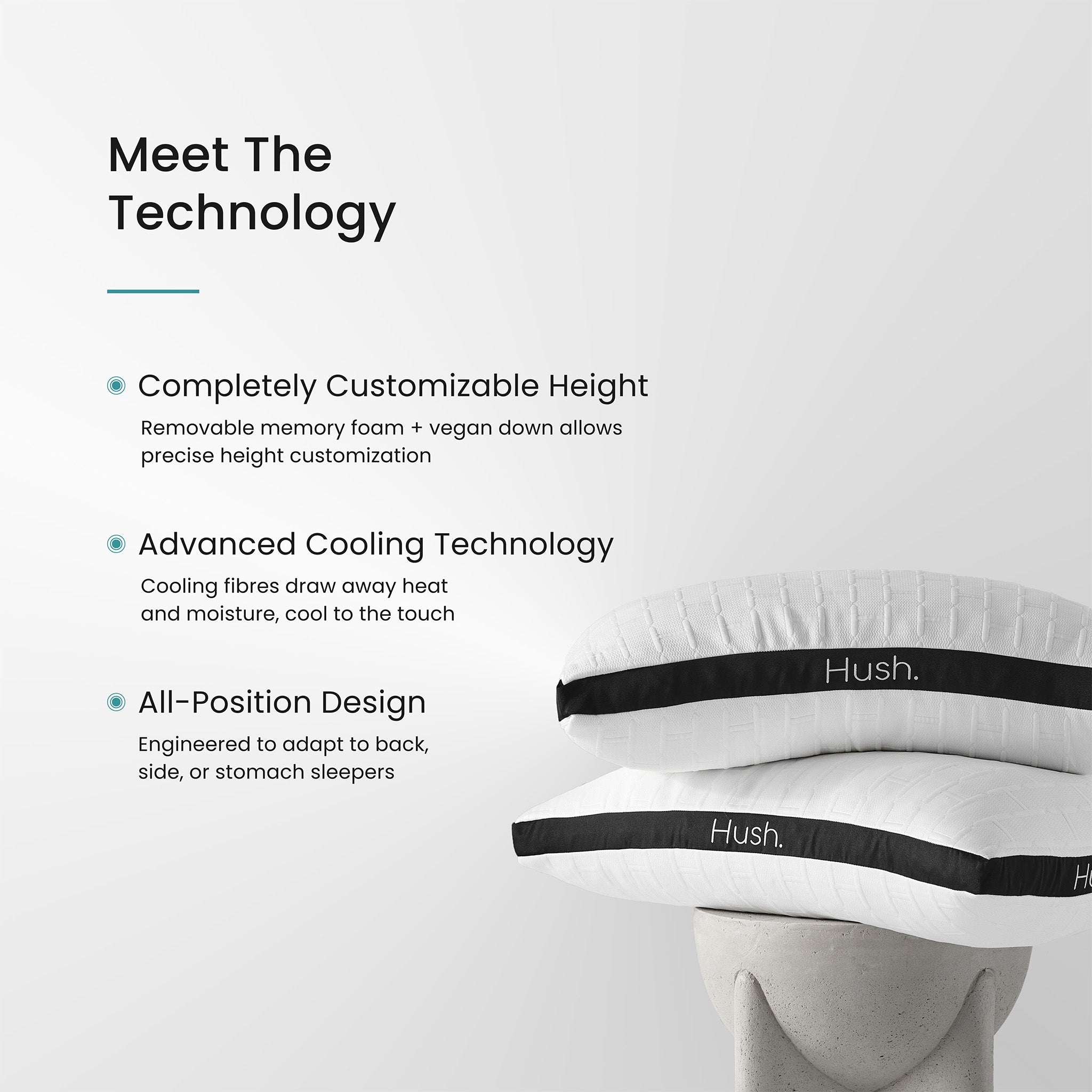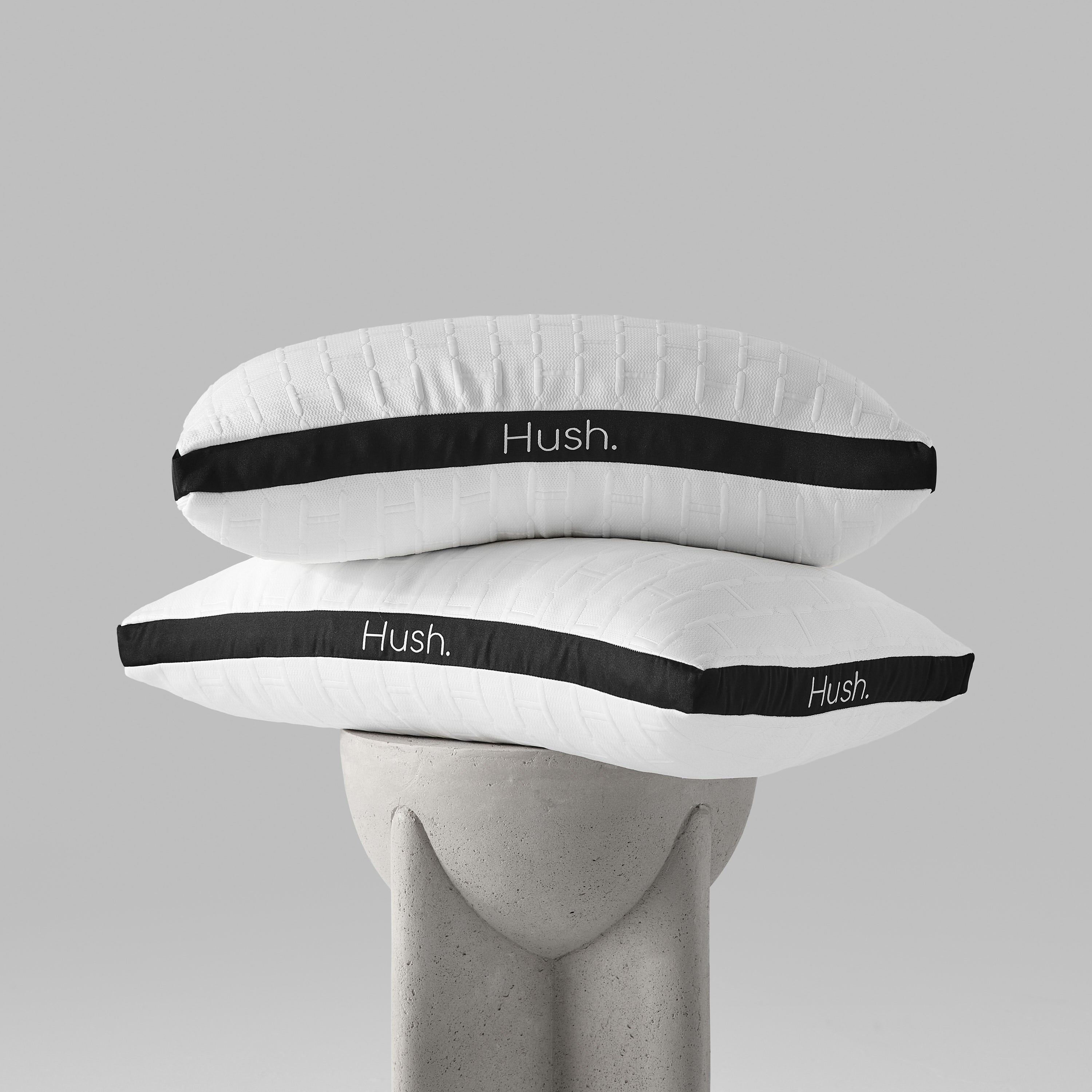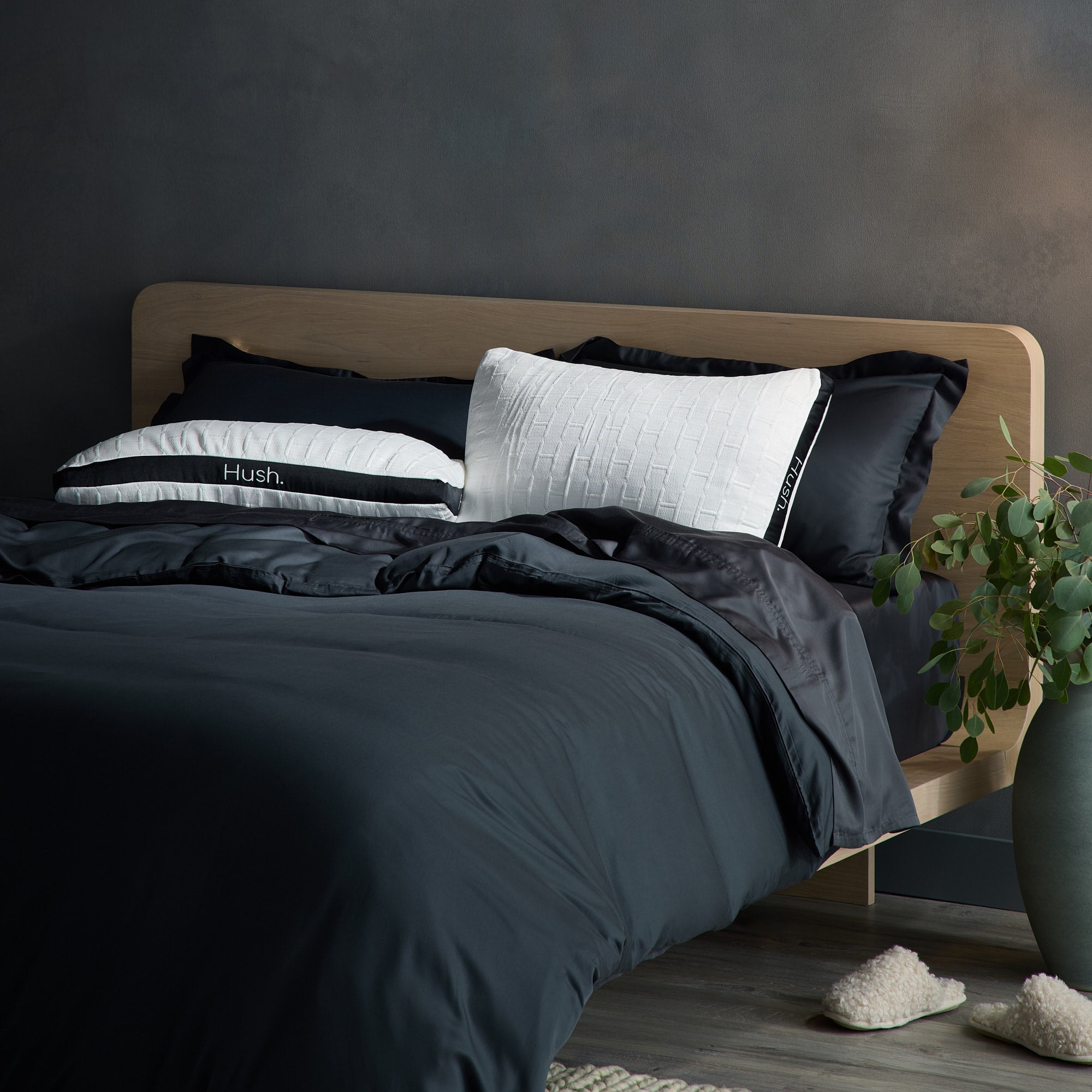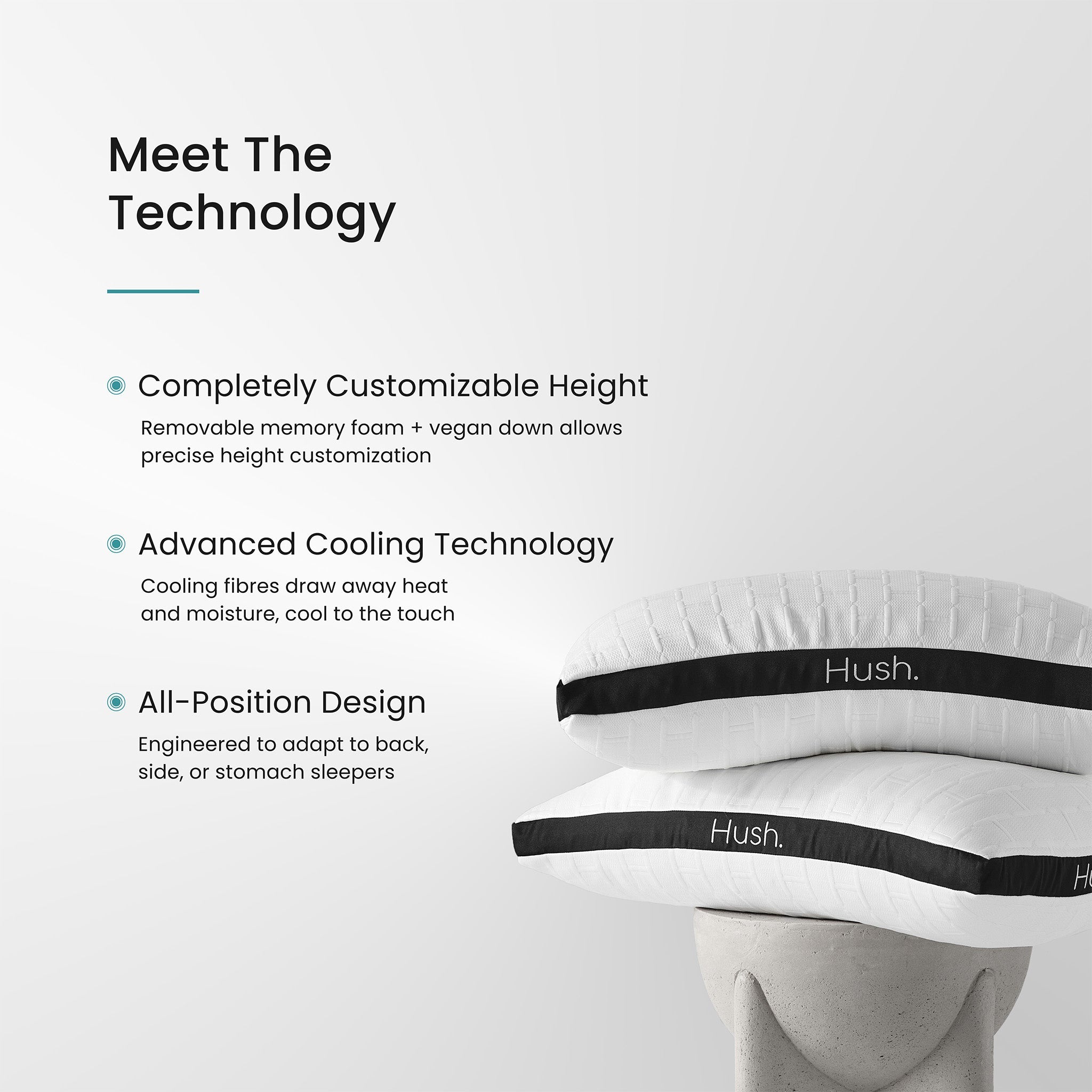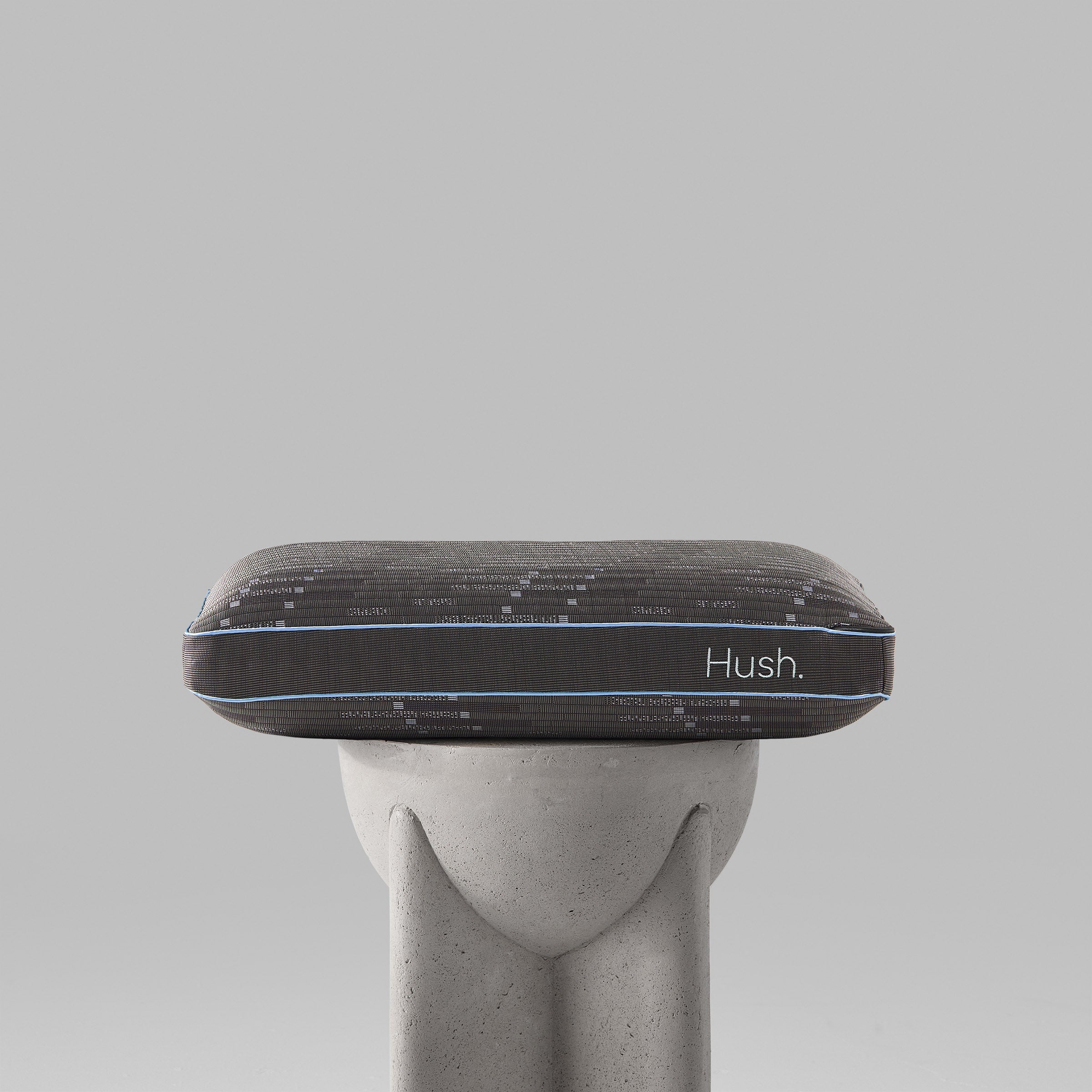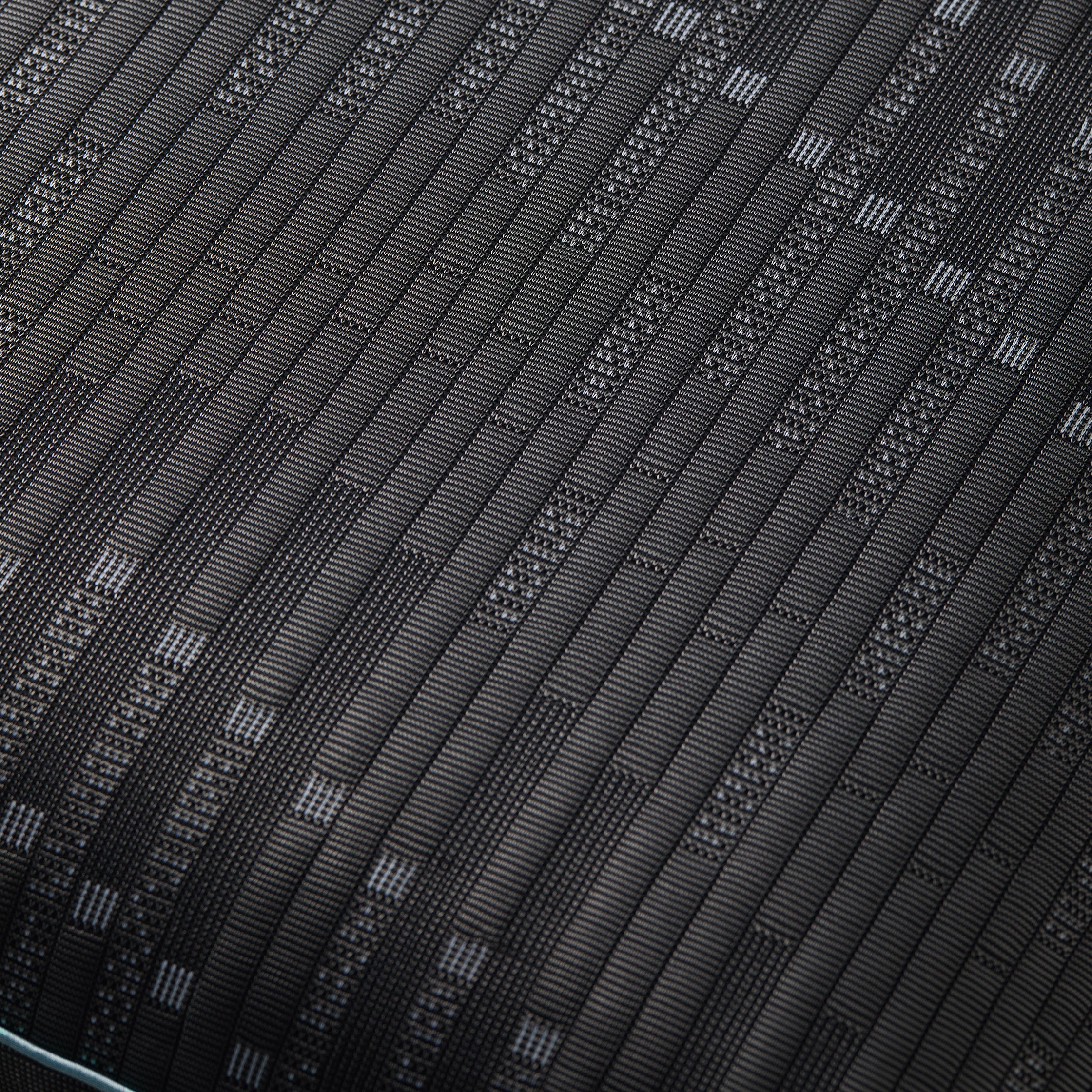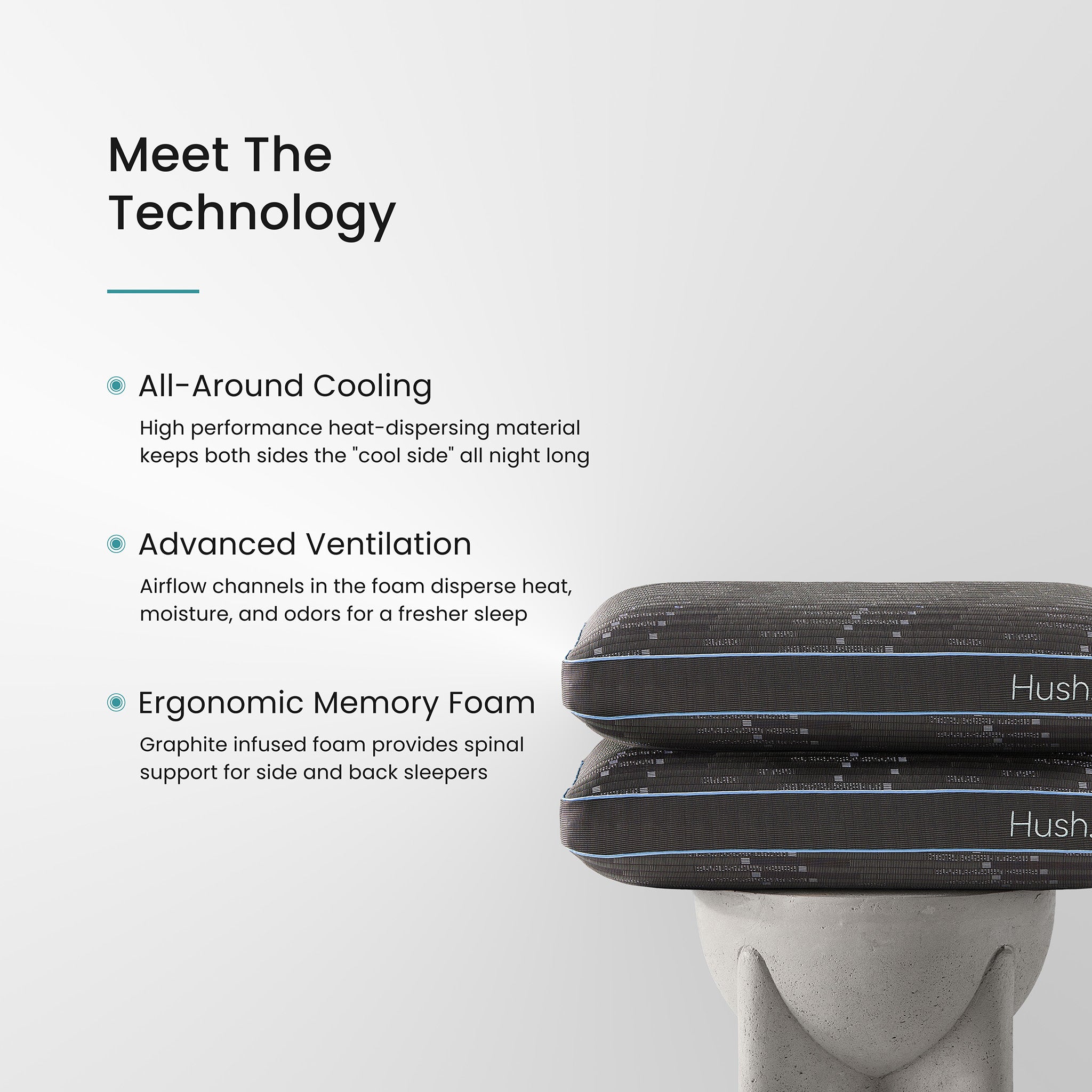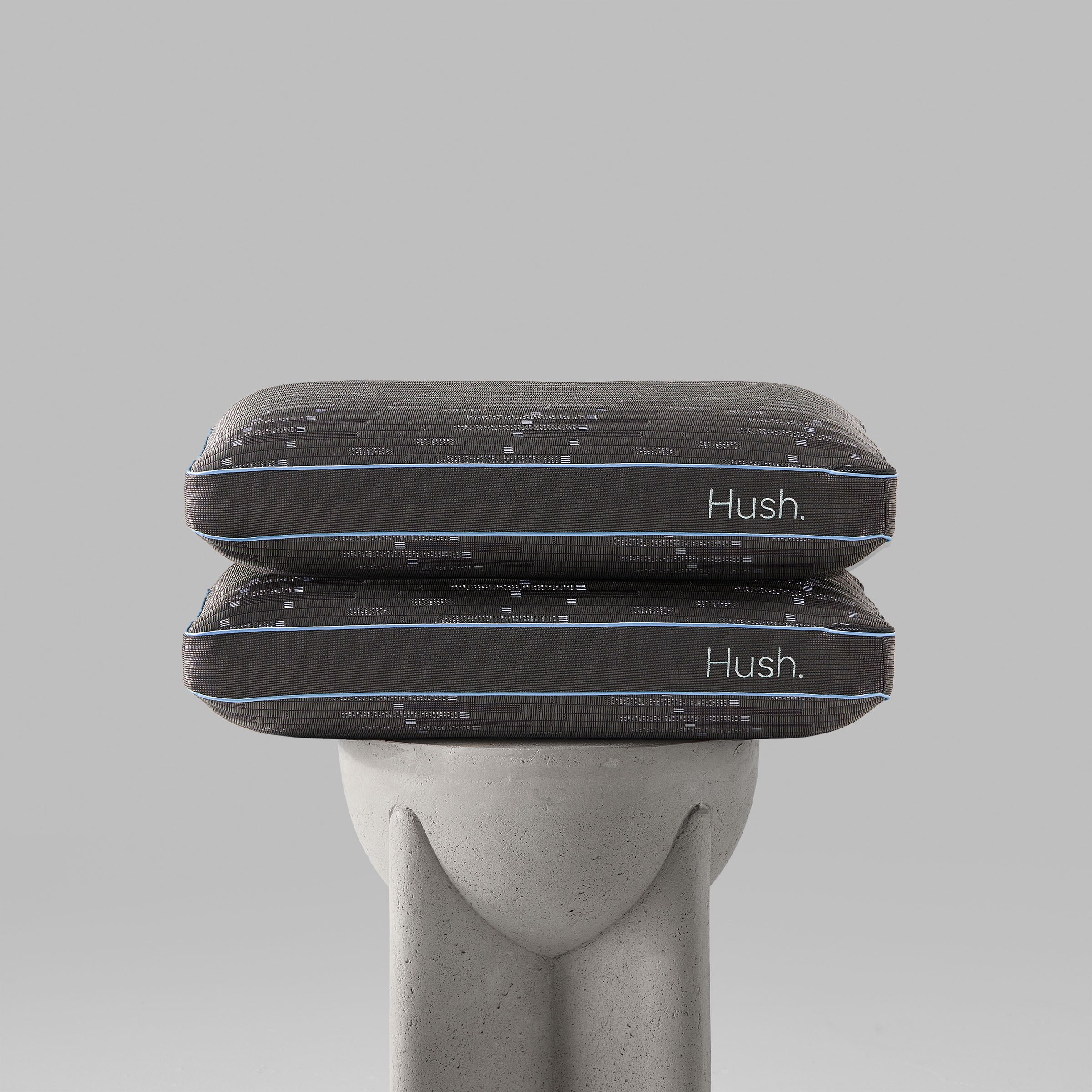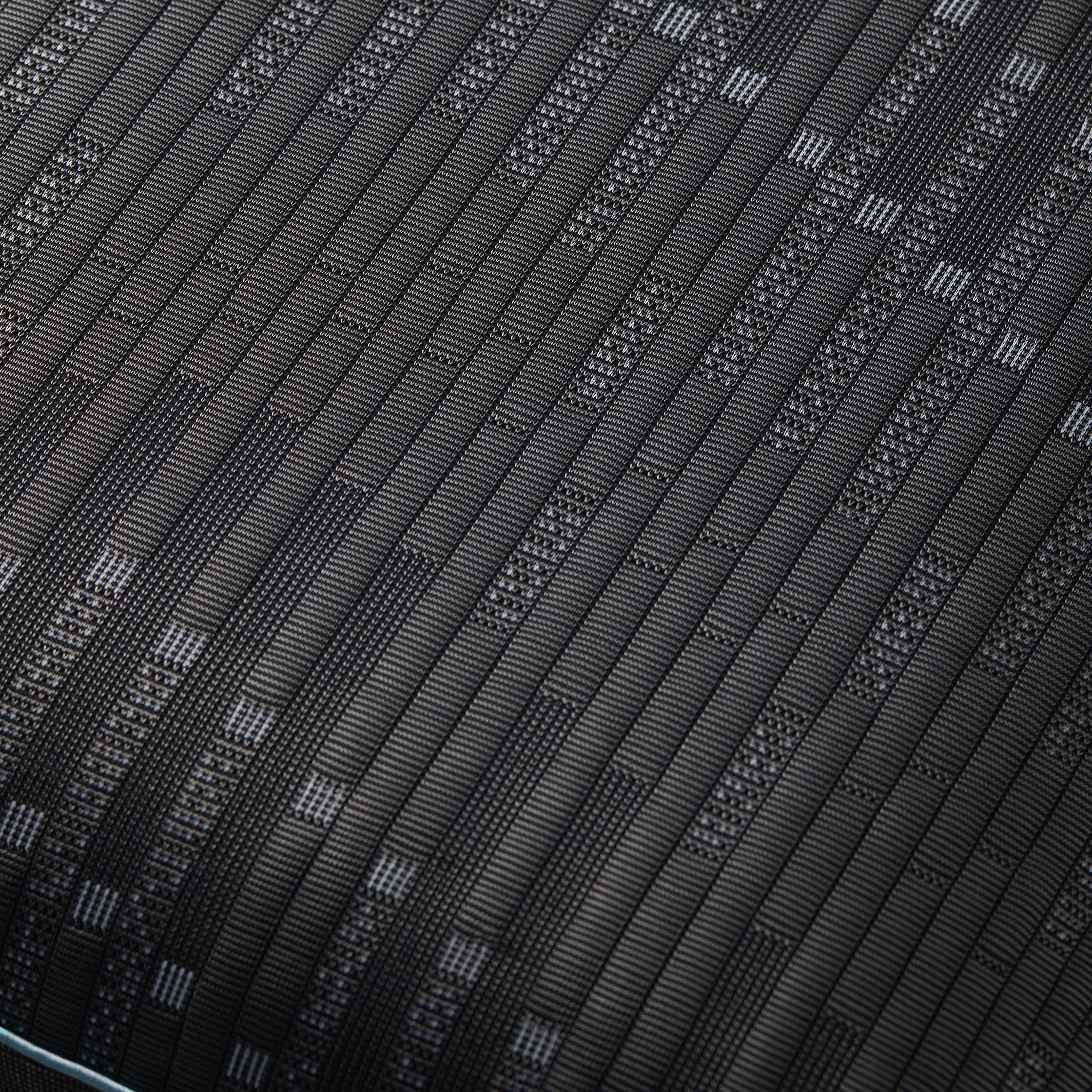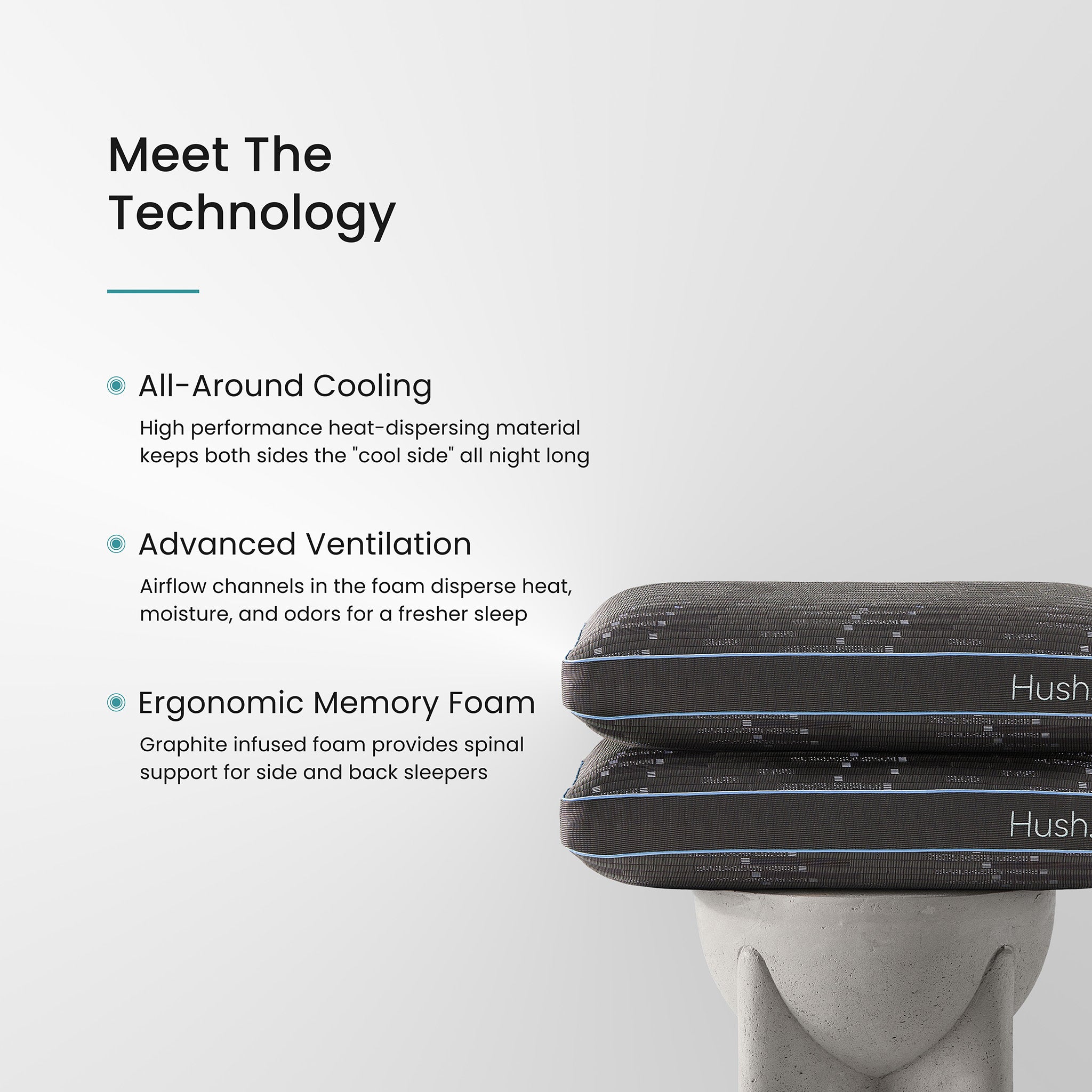Choosing the perfect bed sheets begins with picking the perfect material. Nowadays, you have lots more options than just plain cotton sheets, from natural materials like bamboo to space-age synthetics like microfiber. Are you torn between these two options? This post will explore the pros and cons of microfiber vs bamboo sheets and help you decide which one is best for you.
There's a lot to love about both bamboo and microfiber sheets. We did extensive research into each material while developing our Hush Iced sheets, trying to get beyond marketing hype to determine their strengths and weaknesses. From interviewing textile makers around the world to ripping sheets apart with our bare hands, we got deep into the weave of these two fabrics. Now we’re going to walk you through what we discovered.
At a glance:
- Microfiber vs. Bamboo Sheets: The Basics
- Both Types of Sheets Are Very Soft
- Bamboo Sheets Are More Durable
- Microfiber Bed Sheets Are Often Less Expensive
- Bamboo Sheets Are Cooler
- Microfiber Sheets Resist Spills and Wrinkles
- Both Microfiber And Bamboo Sheets Require Delicate Washing
- Bamboo Sheets Are More Eco-Friendly
- Microfiber vs. Bamboo Sheets: The Bottom Line
Microfiber vs. Bamboo Sheets: The Basics
Bamboo fabric has become a popular choice for bed sheets and other textiles in recent years. Made from the bamboo plant, this natural fiber is often described as being softer than cotton, more absorbent than polyester, and cooler than linen.
Most bamboo sheets use a fabric called bamboo viscose (AKA bamboo rayon). It's formed by extracting the soft fibers from bamboo wood pulp and spinning them into slender but sturdy threads. The result is that bamboo sheets feel soft, smooth, and cool against your skin, perfect for summer months when you want to sleep under something light and airy.
Bamboo is also environmentally friendly. It grows quickly and doesn’t require much water or fertilizer, making it a more sustainable material for bed sheets than most other textiles. That's another reason many customers now prefer bamboo sheets over cotton, which is far less sustainable to produce.
What about microfiber? This synthetic fiber has been around for decades and is known for its durability, moisture-wicking properties, and resistance to bacteria and odors. It's made from artificial materials like polyester which are shaped into super-fine threads through a high-tech manufacturing process.
Microfiber bed sheets can vary a lot in quality, but the best ones are quite soft and plush. The fibers are incredibly fine, allowing for a very high thread count that feels soft against your skin. High-quality microfiber also holds up well with repeated use and washing.
Now that we've introduced both fabrics, let's break down the similarities and differences in detail.
Both Types of Sheets Are Very Soft
When it comes to comfort, there's no clear winner between these two types of bedding. It will ultimately depend on personal preference. Most customers agree that both fabrics are luxuriously soft, but there are significant differences in how they feel on your skin.
Bamboo sheets tend to have a sleek, satiny texture. Bamboo fiber is naturally very smooth, without a lot of frizzy bits to catch on your skin. Bed sheets made of this material glide over your body like water on wax.
Some people are uncomfortable with how smooth bamboo sheets are, saying they feel slippery. This is especially true when the fabric has a higher thread count than usual. The most comfortable bamboo sheets have thread counts of around 300-350. When thread counts increase past that point the fabric can start to feel too slick.
Microfiber sheets are also touchably soft, thanks to their ultrafine threads. They have a plush, stretchy texture that’s very different from the silky soft feel of bamboo bedding. These sheets feel more like flannel or cotton sheets than bamboo.
Despite their softness, microfiber bedding isn't comfortable for everyone. Many customers say that their microfiber sheets made them feel as if they were wrapped in plastic. Technically, they were — microfiber is just super-thin threads of polyester. If you're sensitive to the difference between natural and synthetic fibers, you may find bamboo sheets more comfortable.
Bamboo Sheets Are More Durable
In terms of durability, bamboo sheets win hands-down. Bamboo fiber is extremely resilient, which will come as no surprise to anyone who's felt the supple strength of live bamboo. This durable fabric will last for years even with repeated washing.
Microfiber sheets aren’t as strong. They get their softness from their slim threads. These fibers are only a tiny bit thicker than spider silk. As a result, they're gentle on your skin, but also very delicate.
When those tiny filaments rip, the broken ends get rolled up into little knots. This is known as "pilling", and it can make even the softest sheets feel rough and uncomfortable after a while. Microfiber bedding is far more prone to pilling than bamboo sheets. It's also more likely to wear thin and develop holes.
Some microfiber bed sheets are sturdier than others, so make sure to check the reviews before you buy like our in-depth Cosy House sheets review that looks at whether the sheets live up to their claims. Customers aren't shy about complaining when their sheets pill up and rip after just a few washes.
Bamboo bed sheets can also vary in quality, of course. The fabric strength changes based on everything from where it's harvested to the temperature at which it’s woven. At Hush, we make it a point of pride to source only the most durable fabric for our bamboo sheets. That's why they have the highest pilling-resistance rating possible for bed sheets.
Microfiber Bed Sheets Are Often Less Expensive
Microfiber sheets are typically more affordable than bamboo. There's no need to grow, harvest, or process any crops to make them. The manufacturing process is fast and cheap.
However, the calculation looks a little different if you're thinking long-term. As we just noted, bamboo sheets hold up longer, and it's important to consider both price and durability in any buying decision. You'll have to replace microfiber bed sheets much sooner than more luxurious sheets made of bamboo.
If you’re looking for a bedding set that will last for many years, bamboo is a good choice. However, if you are on a budget, microfiber may be a better option. Whichever material you choose, make sure you’re getting high-quality sheets with good reviews from users. Choosing the absolute cheapest option usually just buys you poor sleep.
Bamboo Sheets Are Cooler
If you tend to sleep hot or live in a warm climate, bamboo bedding is the way to go. Bamboo is a naturally breathable material, helping regulate your body temperature and keeping you cool at night. Each bamboo fiber is full of microscopic openings that let air flow through. This lets heat rise up and away while the cooler night air filters in.
Microfiber strands don't have these openings, and microfiber sheets tend to be woven much more tightly. This difference means microfiber bed sheets will trap a lot of heat inside, raising the temperature higher the longer you snuggle under them.
Some reviewers claim that microfiber sheets are better for sweaty sleepers because they can soak up more liquid. However, bamboo sheets also absorb moisture very effectively. And they're less likely to make you sweat in the first place.
If you tend to sweat at night even though you're cold, you may like microfiber sheets. But in general, the best sheets for night sweats are made of bamboo.
Microfiber Sheets Resist Spills and Wrinkles
Microfiber is highly elastic, so it quickly snaps back into place when you stretch, rumple, or fold it. This makes these sheets highly wrinkle-resistant. They'll look smooth and tidy no matter how long you let them sit in the hamper after doing laundry.
Microfiber sheets also resist stains due to their closely woven fabric. It takes longer for liquid to penetrate the tight threads. So if you accidentally spill on a microfiber sheet, you can often wipe it off before the stain sets.
Bamboo sheets don't have these advantages. However, you can still keep them looking great with proper care. To avoid creases, hang your bamboo sheets to dry or put them on the bed right after they come out of the dryer. And if you accidentally stain them, a gentle wash with a small amount of white vinegar or lemon juice will usually get them looking clean again.
Both Microfiber And Bamboo Sheets Require Delicate Washing
We've already mentioned that microfiber bed sheets aren't the most durable. They're good at holding their color in the laundry, but they're prone to pilling. To make them last as long as possible, it's important to wash them on a delicate setting using cold water. You should use only mild detergent, and avoid fabric softener — despite the name, it can actually degrade the sheets and make them rougher.
Bamboo sheets are stronger than microfiber, but they shrink more easily. They can also be damaged by fabric softeners or harsh detergents. It's best to wash your bamboo sheets more or less the same way as microfiber.
One important difference: microfiber bed sheets can go through the dryer at normal temperatures (though they do tend to get very staticky). If you’re going to tumble-dry bamboo sheets, use low heat. Hanging them on a clothesline is even better if the weather is nice.
Bamboo Sheets Are More Eco-Friendly
When it comes to environmental impact, bamboo is the clear winner. It's a biodegradable fabric, made from a renewable crop that's easy on the earth. Bamboo can be grown with very little water and no synthetic fertilizers or pesticides. Harvesting bamboo stalks doesn't contribute to erosion, either, because the roots can remain in place.
Microfiber is a much less eco-friendly material. Though the synthetic fibers rip easily, they take a long time to fully break down in the environment. The manufacturing process also depends heavily on fossil fuels. Microfiber bedding requires about twice as much energy to produce as cotton sheets.
As if that wasn't bad enough, washing microfiber bed sheets releases tiny fibers into the ecosystem. This contributes to the growing problem of microplastics building up in the bodies of living creatures — including humans.
Keep in mind that not all bamboo sheets are equally eco-friendly. Processing the raw material of bamboo into soft fabric often involves harsh chemicals. These contaminants can leak into the groundwater if manufacturers aren't careful about cleanup.
Green shoppers should buy only organic bamboo sheets that are produced by responsible manufacturers. At Hush, we're careful to source our material from ethical suppliers.
Microfiber vs. Bamboo Sheets: The Bottom Line
Microfiber bed sheets are wrinkle-resistant and affordable, and many people find them very cozy. But if you’re looking for incredibly soft, comfortable bedding that will keep you cool all night, bamboo sheets are the way to go. They may be slightly more expensive than microfiber, but they are cooler and more durable — meaning they’ll last longer. Plus, bamboo is better for the environment, so you can feel good about your purchase.
Are you ready to experience the benefits of bamboo yourself? You can't go wrong with Hush bamboo sheets. They're ethically sourced and extremely durable, with a special finish that helps your skin feel ultra-cool. Head over to our product page and start your 100-night trial!
